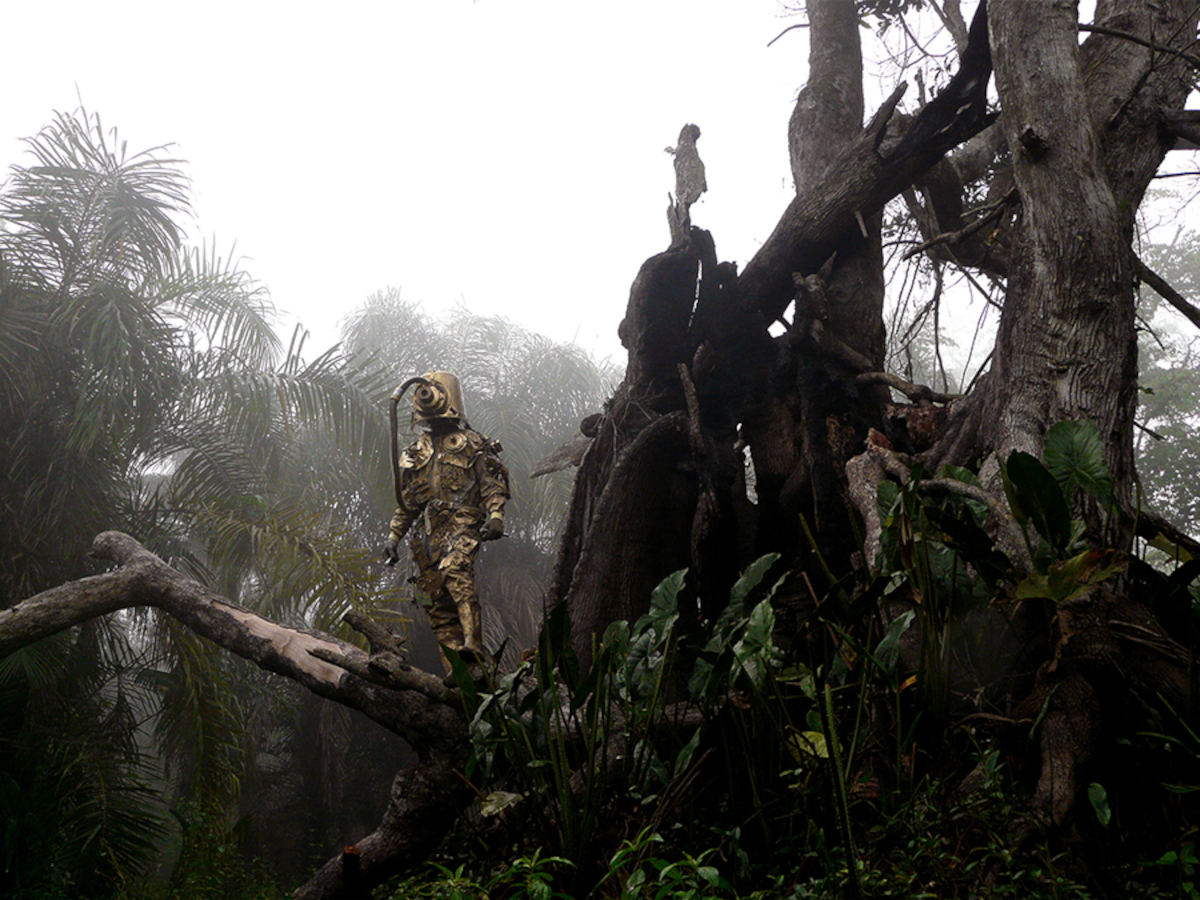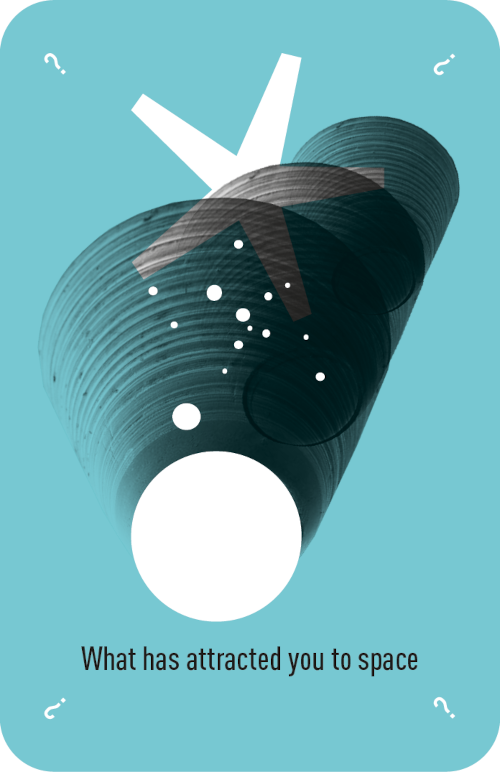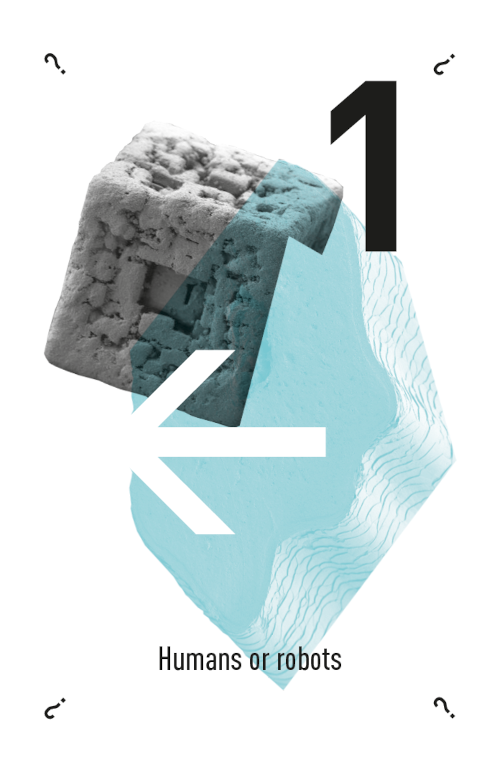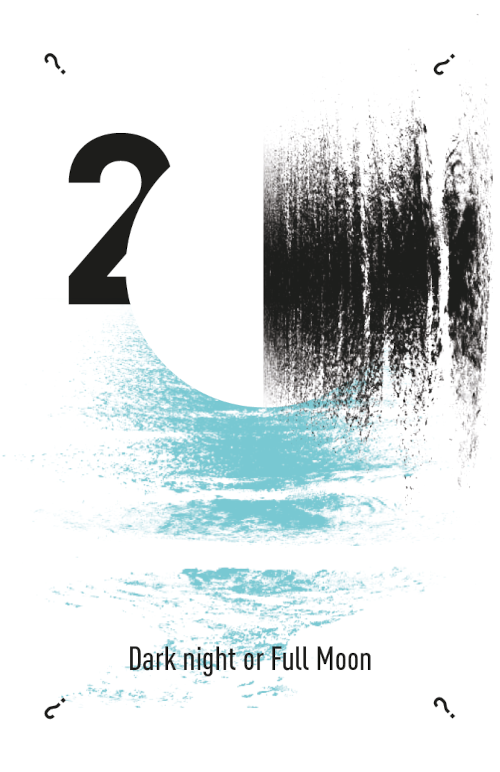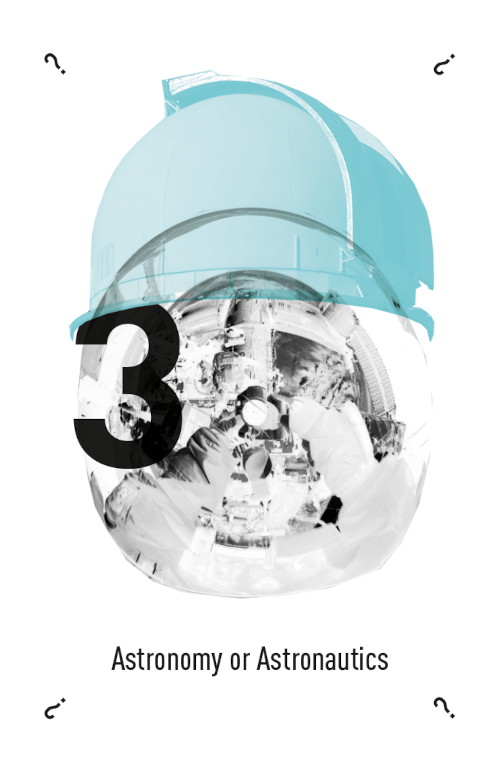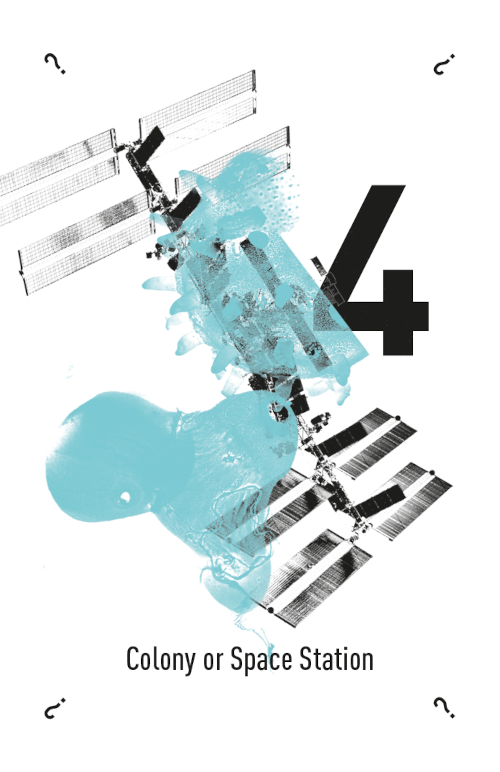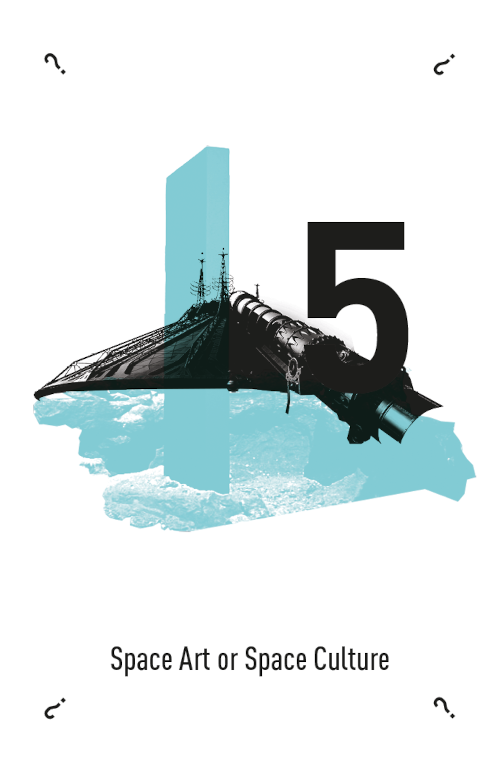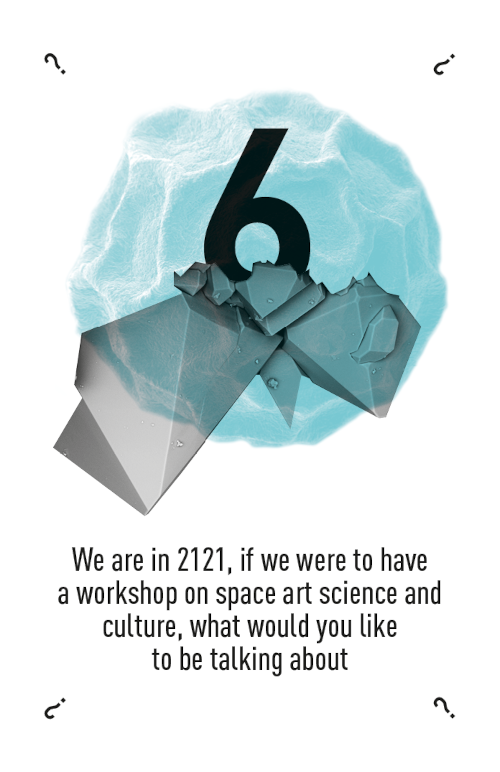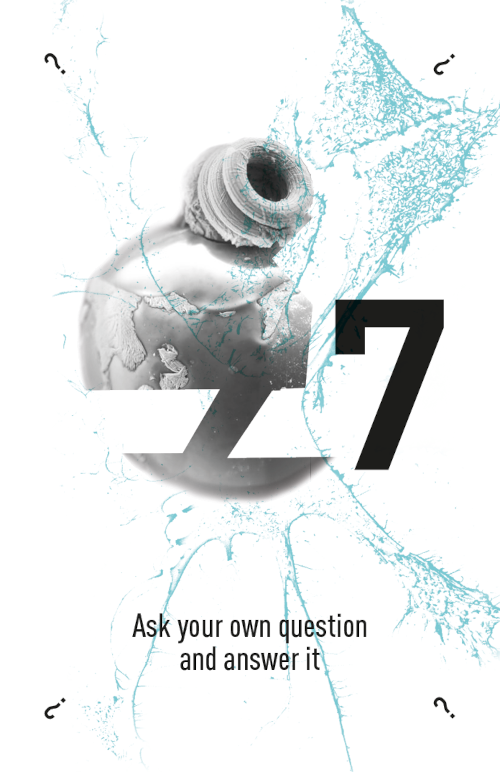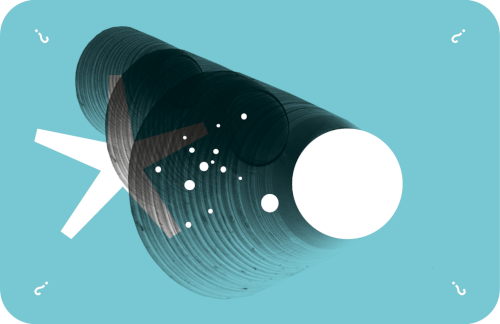
Space Art, Science and Culture: Visions for the 21st Century
A Leonardo/Olats Workshop
March 23rd – 24th 2019 – Paris
(by invitation only)
Introduction
After the dreams, enthusiasm, skills and knowledge of the 20th Century that put humans in outer space -be it directly or indirectly with probes, satellites, and other scientific instruments- what are the current visions and approaches of and for space art, science and culture as we have entered the 21st Century and the « Age of Anthropocene » on Earth?
With the Leonardo Space and the Arts Workshops that took place between 1997 and 2004 and the delocalized events of 2005, Leonardo/Olats contributed to make the « space art community » visible to itself and to promote the artists involved in this field. It brought together not only artists, but also scientists, space engineers, space lawyers and ethicist, curators and teachers and helped frame exchanges and collaborations.
Nowadays, this field is blossoming with numerous projects and activities ocuring around the world.
Fourteen years later and well into the 21st century, Leonardo/Olats is questionning anew the field of space art, science and culture by reconvening and proposing a new series of workshops.
This first workshop (only by invitation), taking place at the house of rocket scientist pioneer and Leonardo founder Frank Malina, proposes to address two main threads:
Space in the 21st Centuy, what for?
From Space Habitat, to Space Tourism and Space Ecology
This thread discusses questions such as: What do we want to do in space and why? What kind of space habitat are we envisionning? Is space tourism such a great idea? What would be a space ecology and a sustainable access to space? What kind of art are we interested to deploy and create? Should we move on with our previous approaches or can we already witness new alternative visions?
Art, Culture and Space Sciences
Where do space sciences stand in relation to art and culture ?
Under the term « space sciences » we mean both sciences done in/from space and sciences about space achieved in space or from Earth. This includes science done in space to take advantage of micro gravity condition, earth science done from space but also astonomy be it done from space or on earth (from landing a probe on a comet, to robots on Mars, to detecting gravitational waves, to name just recent iconic achievements).
Even before sending art into space or creating art in relation to the human presence into space, Astronomical art has been one of the founding branches of « space art », depicting our « Visions of Space ». In this thread, we discuss new approaches and programmes dealing with art related to contemporary astronomy on the one hand and to space sciences as defined here on the other.
Curators
The « Visions for the 21st Century » workshop has been co-curated by Annick Bureaud and Ewen Chardronnet
Annick Bureaud
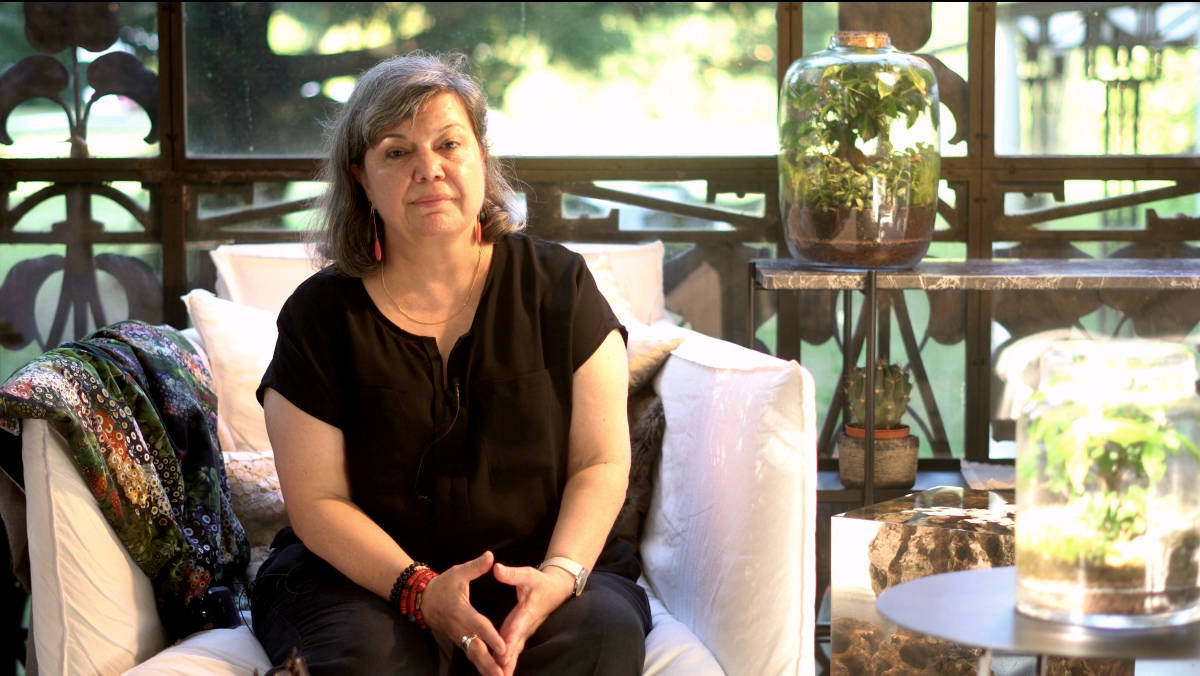
Directrice Leonardo/Olats
Art critic and Curator
Annick Bureaud is an independent art critic, curator and event organiser in the field of art and technosciences. She wrote numerous articles and contributes to the French contemporary art magazine art press. She organised many symposia, conferences and workshops among which Visibility – Legibility of Space Art. Art and Zero Gravity: The Experience of Parabolic Flight, project in collaboration between Leonardo/Olats and the International Festival @rt Outsiders, Paris, 2003. In 2009, she co-curated the exhibition (Un)Inhabitable? Art of Extreme Environments, Festival @rt Outsiders, MEP/European House of Photography, Paris. In 2018, she curated the Bourges Bandits-Mages Festival Mending the Fabric of the World. She is the director of Leonardo/Olats.
ROSCOSMOE : the Open Clinostat
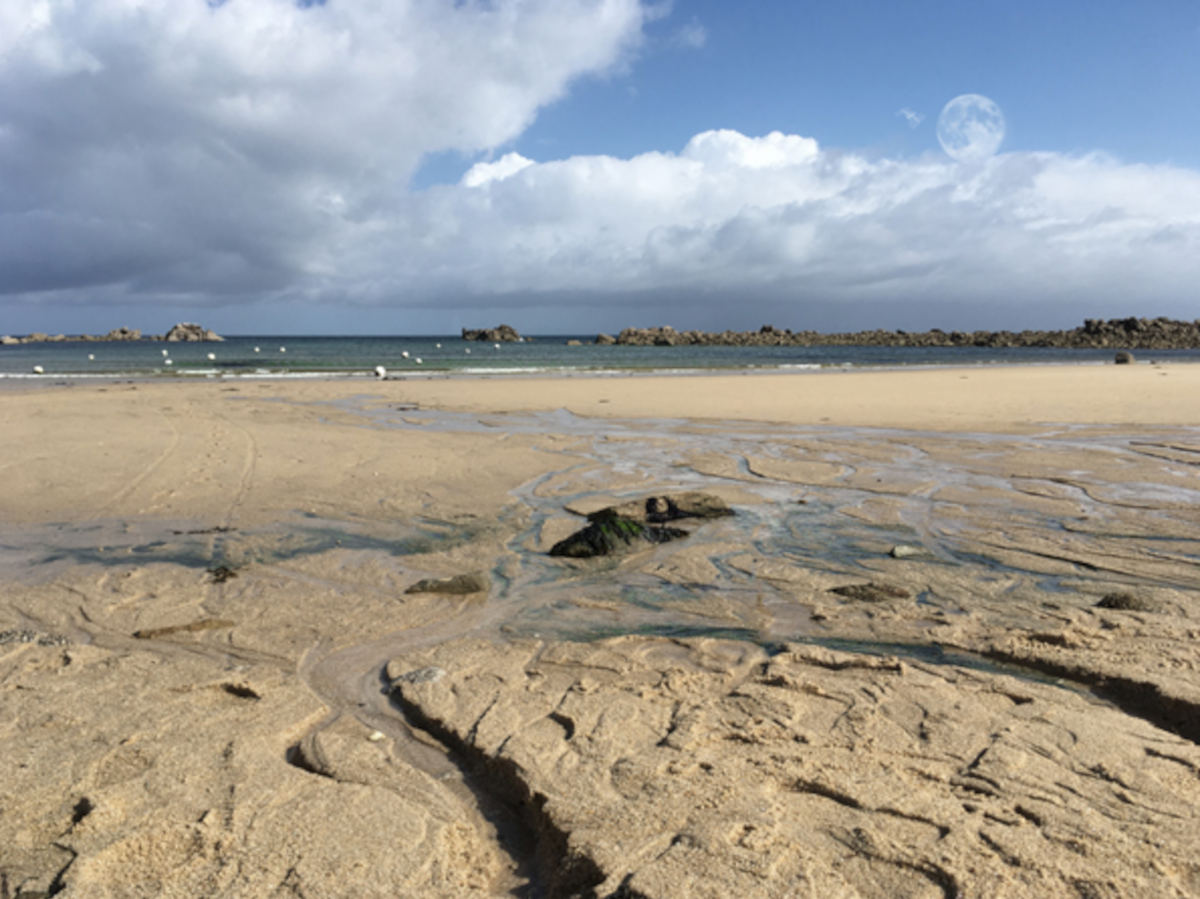
caption : Roscosmoe, a project rooted in Roscoff, Brittany, France (credit Miha Tursič)
Roscosmoe aims to develop and design a series of experiences and bioregenerative life-support systems to assess the behavior of symbiotic marine organisms in a variety of gravitational environments, including zero-gravity conditions. One of the objectives of Roscosmoe is to develop an Open hardware 3D Clinostat, a microgravity simulation tool used for the behavioral study of living organisms.
The Open Clinostat 3D project is developed in the fablab Platform C with the members of the PING association of Nantes and the support of the Federation – Open Space Makers initiative, the support of the CNES and the M3 laboratory of the Roscoff Marine Station (CNRS – Sorbonne Universités).
The interdisciplinary project Roscosmoe aims to study the potential of terrestrial and marine biodiversity in the field of space research. It connects marine biology, design, anthropology of science and intermedia art.
Ewen Chardronnet
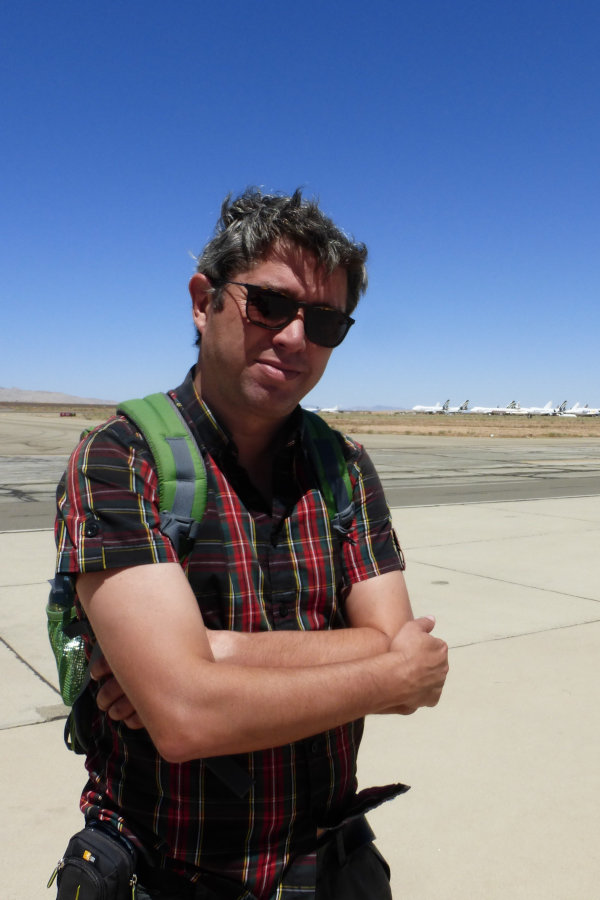
Artist, curator
Ewen Chardronnet is an author, journalist, curator and investigative artist. He has since the early 90s participated in many artistic endeavors and published as an essayist in numerous publications & magazines. He is co-founder of The Laboratory Planet journal and artists group (with Bureau d’études). Their latest project is the Aliens in Green theater-laboratory, an ongoing project in collaboration with Špela Petrič and Mary Maggic. Ewen is active in the field of space culture for twenty years and recently released Mojave Epiphanie (Inculte, March 2016), a non-fiction narrative on the founders of the Jet Propulsion Laboratory.
https://www.ewenchardronnet.com/
https://laboratoryplanet.org/
http://aliensingreen.eu/
References
Stefan Helmreich, Sounding the Limits of Life – Essays in the Anthropology of Biology and Beyond, Princeton University Press, 2015.
Lynn Margulis, Dorion Sagan, Acquiring genomes. A theory of the origin of species. Basic Books, New York, 2002.
Ewen Chardronnet, Mojave Epiphanie, Inculte, Paris, 2016.
Participants
Participants : Bernard Foing| Andy Gracie| Damien Hartmann | Eléonore Hellio | Dr. Barbara Imhof | Stavros Katsanevas | Dr Ulrike Kuchner | Rob La Frenais | Ekaterina Lapina-Kratasyuk | Vanessa Lorenzo | Roger Malina | Regina de Miguel | Susmita Mohanty | Marko Peljhan | Sarah Jane Pell | RYBN.ORG | Miha Turšič | Marco Volponi
Bernard Foing - Towards Moon and Mars Habitats with Science, Technology, Culture and Art
We shall describe our EuroMoonMars Programme to prepare for future MoonMars exploration and utilisation. This combines research, technology, habitat design and field simulations, humanities, training, public engagement and arts. We shall also present some ILEWG ArtMoonMars initiatives to engage EarthMoonMars villagers in this endeavour.
Bernard Foing
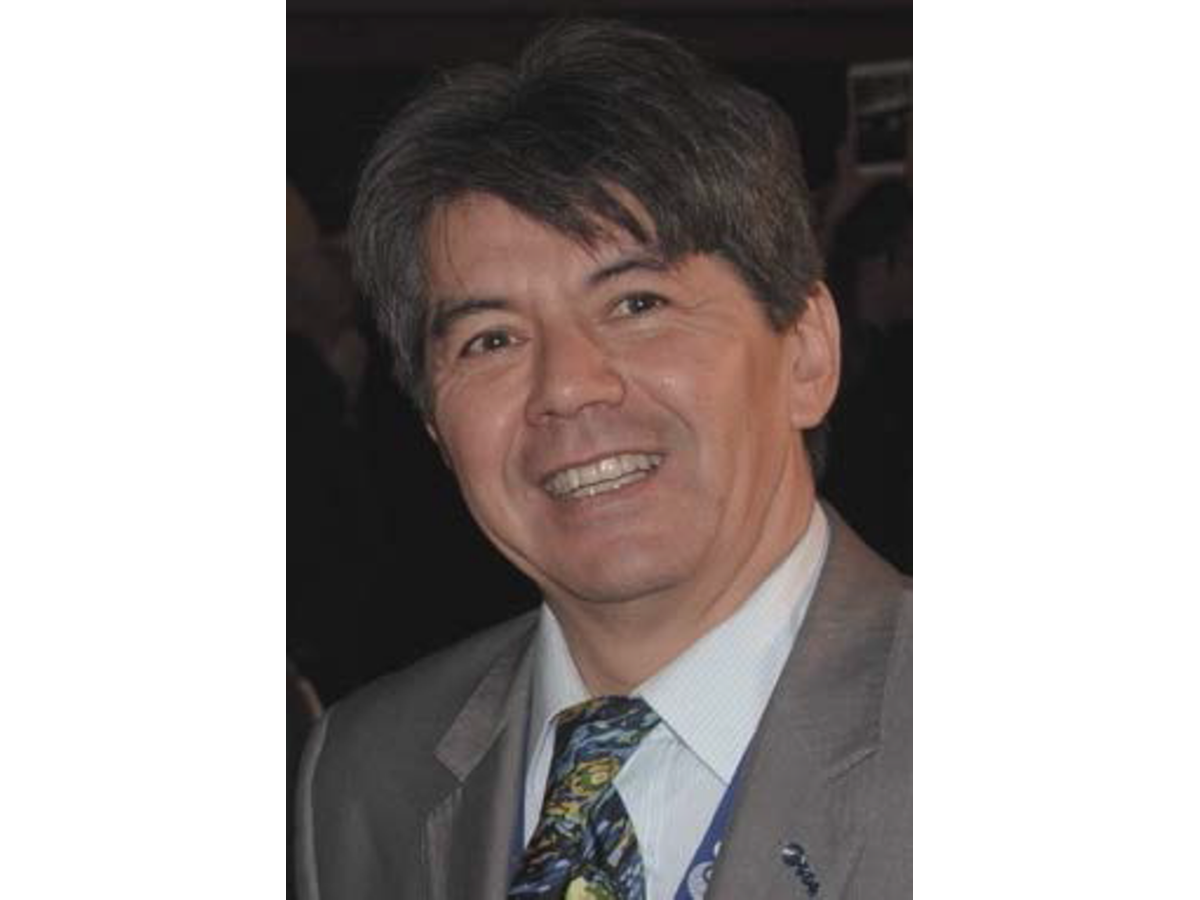
Prof. Bernard H. FOING, ESA Senior Scientist, executive director of ILEWG, SMART-1 Lead scientist, EuroMoonMars manager, Prof VU Amsterdam. Founder of SGAC.
At ESA ESTEC since 1989, as ESTEC staff committee chair (2012-2017), Chief scientist, Head of Research Division, study lead (SIMURIS, MORO lunar orbiter, EuroMoon lander), staff, visiting scientist fellow. Co-Investigator of SOHO, XMM, BIOPAN, SMART-1, Mars Express, COROT, ISS/Expose, ExoMars. Chair IAF ITACCUS, member IAA, COSPAR, MVA, EGU. Publications: 775 articles, including 221 refereed papers (cosmic fullerene C60+, first super-Earth, tropical Mars glaciars, 7500 citations, H44), 16 books , organiser 70 symposia. Academics: Habilitation 1990, CNRS, astronomer ESO Chile, PhD astrophysics & space techniques (CNRS, Lockheed, SacPeak, Boulder, Harvard), Prof agrégé Physics, Ecole Normale Supérieure ENSET.
https://en.wikipedia.org/wiki/Bernard_Foing
https://www.cosmos.esa.int/web/personal-profiles/bernard-foing
References
https://scholar.google.com/citations?user=_fTVp0kAAAAJ&hl=en
https://www.google.com/search?q=euromoonmars
Andy Gracie - SPACE BY PROXY
SPACE BY PROXY
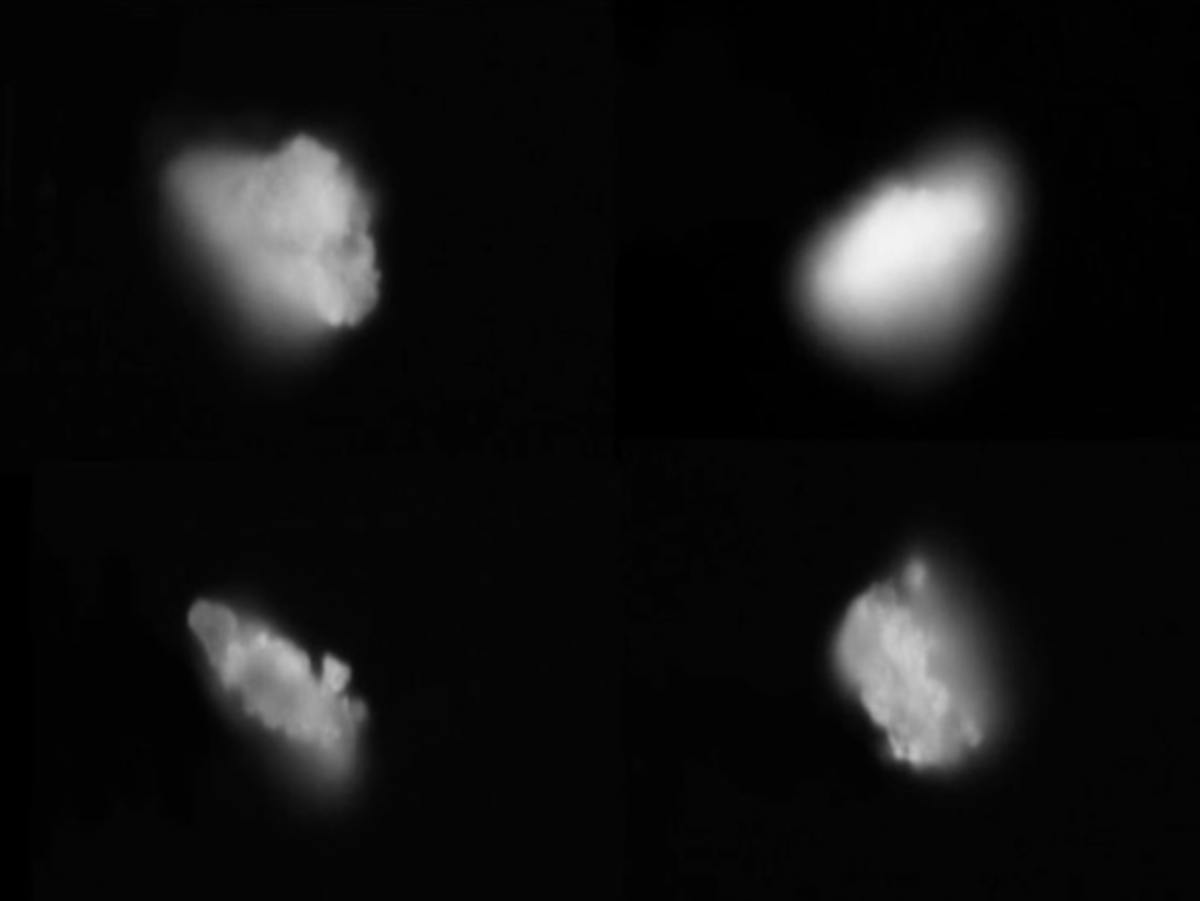
You First Saw The Light..., 2017
The presentation will focus on various ideas about how and why we ask questions about our understandings of and interactions with space exploration. The artist’s work develops parallel threads concerned with the presence of life in the universe and the origins of our local space environment. Projects employing terrestrial but space-faring model organisms as astrobiological test subjects have proposed novel forms of considering biological and planetary boundaries, and build on knowledge gained about our galactic neighbourhood by deep space probes. More recently a line of inquiry into the history, geology and trajectories of solar system materials and objects frame narratives about human connections with space as a physical system and how we explore, navigate and visualise it. How we attach significance to space as a location and a material entity become central to these investigations and experiments.
Andy Gracie
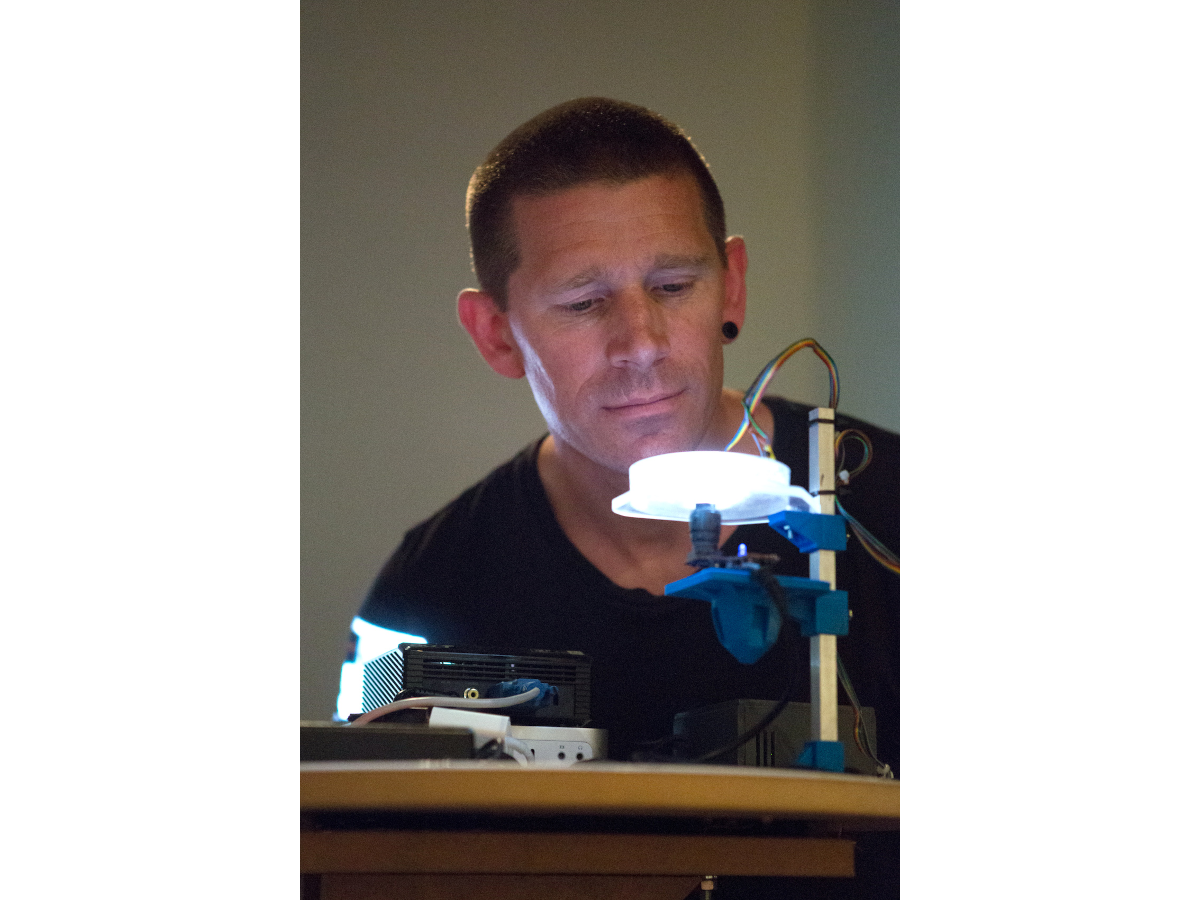
Independent artist
Andy Gracie works at a point of separation between the arts and the sciences, creating situations of exchange which allow new understandings and knowledge systems to develop. Much of his work engages with the science of astrobiology and space research; the origins of life and the origins of the Solar System, coupled with a re-examination of their boundaries. His practice employs scientific theory and practice to question our relationships with exploration and experiment whilst simultaneously bringing into focus the very relationship between art and science, and how new knowledge is culturally assimilated.
Damien Hartmann - Federation - Space for and with all
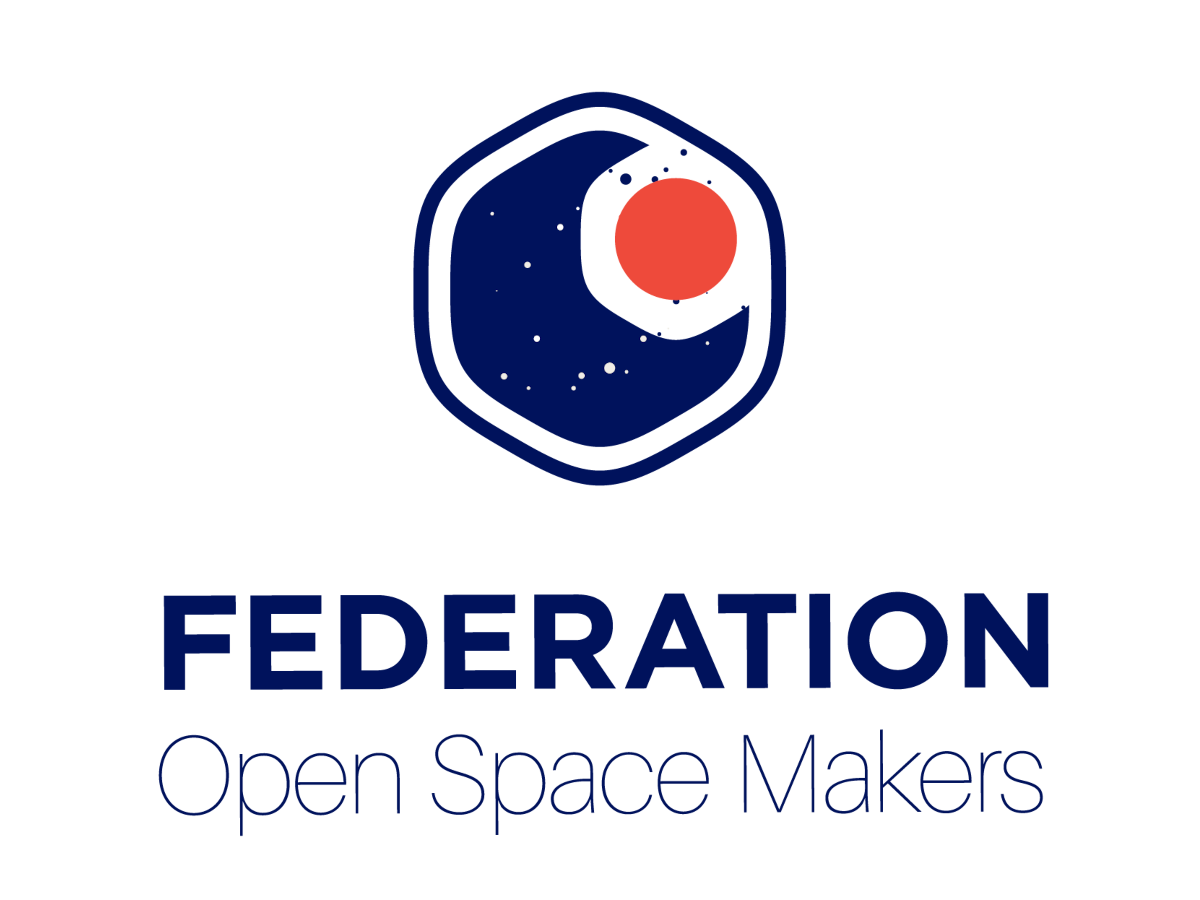
Federation is an initiative instigated by the National French Space Agency (CNES). Its mission is to open up the ecosystem of space infrastructure while giving every citizen the agency and access to the knowledge necessary to participate in the process of creating our future world. We believe that the necessary knowledge and hardware can be developed and produced collaboratively, openly and responsibly.
Damien Hartmann
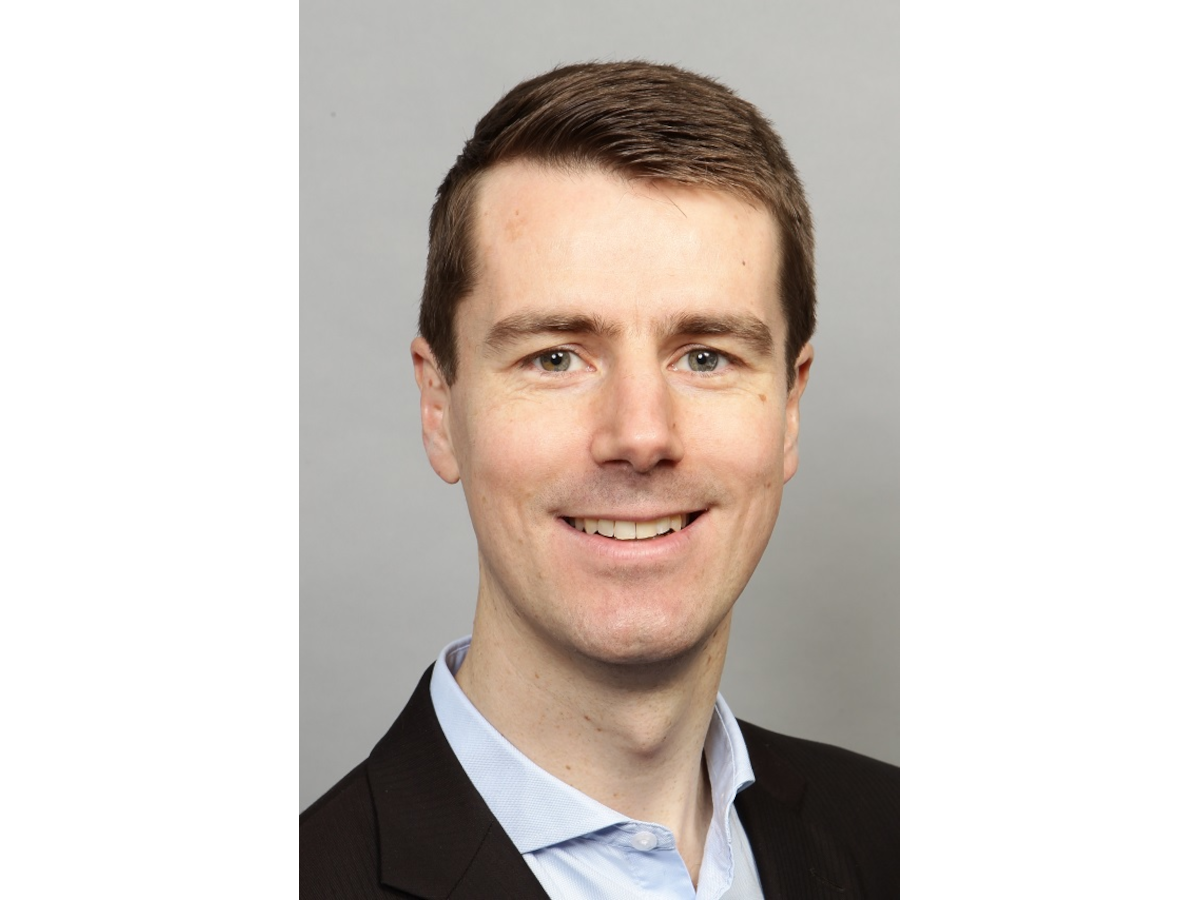
President Open Space Makers
Space enthusiast who has been involved in open source space projects for more than 6 years, now president of the Open Space Makers non-profit organization, which is developing the Federation initiative launched by CNES to promote the involvement of amateurs in open source space hardware design. During the day, working as a sales representative in the IT industry.
References
https://www.federation-openspacemakers.com/fr/decouvrir/a-propos/
https://www.federation-openspacemakers.com/fr/decouvrir/charte-federation/
Eléonore Hellio - Kongo Astronauts
Eléonore Hellio
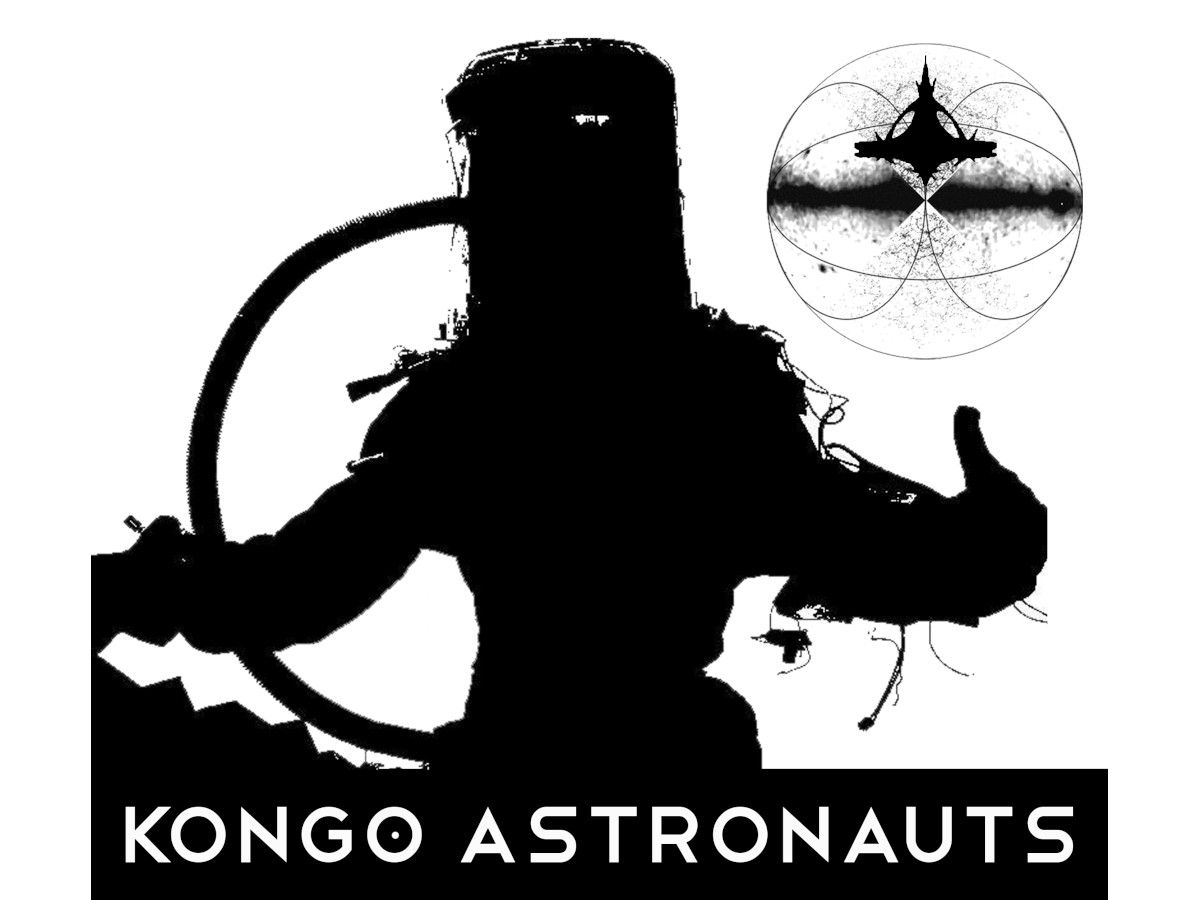
Artist
Eléonore Hellio lives and works in Kinshasa (Democratic Republic of Congo). She organizes workshops, makes films, installations, performances and publishes texts and photographic work, as a solo practitioner and in collaboration with Kongo Astronauts, a collective that she founded in 2013 with performance artist Michel Ekeba. As one of the co-founders of CATPC (Cercle d’Art des Travailleurs de Plantation Congolaise), she is at the helm of daily actions aimed at questioning and understanding the critical curriculum of LIRCAEI (Lusanga International Research Centre for Art and Economic Inequality) through the making of ancestral and afrofuturist sculptures with plantation workers. Simultaneously, she is involved in a wide range of art and research projects like SPARCK, a multi-platform, experimental Pan-African curatorial platform bringing together international thinkers around questions relating to the impact of digital globalization and challenges posed by the postcolonial era.
http://www.eternalnetwork.space
References
– World wants words by Celine Ahond (conversation)
– CATPC – Cercle d’art des travailleurs de plantation congolaise (text)
– Eternal Network in Kinshasa, Neural Magazine n°49 Off western (text)
Dr. Barbara Imhof - ɛkspɪˈdɪʃ(ə)ns
The talk will highlight expeditions as part of my collaborations with artists and my work in the LIQUIFER team in designing for human space exploration. A loop will be generated in which art, science, engineering and technology converge. In brief the following projects will be presented:
– Deep Sea Minding with an insert of project RegoLight)
– Antarctic Biennale Expedition with an insert of insert of the greenhouse project EDEN ISS
– SHEE habitat in MOONWALK Mars Mission simulations
Expeditions are defined as journeys undertaken by a group of people with a particular purpose.
The expeditions will take the audience from the depth of the sea to the coldest place on earth, and further to a place in Europe which resembles Mars. They were undertaken for exploring the arts, connecting science and art and testing developed technologies for space exploration in analogue environments.
The project Deep Sea Minding is a 3-year interdisciplinary project led by the Danish artist group Superflex who investigates habitats for fish shared with humans under and above water, and examines social behaviour of fish both artistically and scientifically. As part of the 2018 expedition to the South Pacific, the newly emerged island of Honga Tonga was visited which also found NASA’s interest in exploring how life emerges from alien worlds.
How to start building with local resources in situ was explored through Solar Sintering, firstly demonstrated in 1992 by Allen, Hines, McKay and Morries (1). The insight for the experimental set-up on Hunga Tonga was derived from project RegoLight, a EU-funded technology project with the aim to advance the technology readiness levels and to demonstrate how interlocking building elements in three automated printing campaigns including in vacuum can be solar sintered.
The Antarctic Biennale expedition explored a place on earth which is the closest one can come to space on terrestrial grounds due to its very extreme nature. The Antarctic Biennale was conceived by the Russian artist Alexander Ponomarev and curated by Nadim Samman who described the endeavour as follows,
« We are here because Antarctica is place that is communicated as being central to our understanding of planetary systems, such as climate change, our climate sciences, the geophysical sciences. It is a place that everyone is told about. A place that everyone is expected to care about. A place that grabs the imagination, that seems both otherworldly and intensely connected to everything else on this planet. We’re here because Antarctica is so central to many of our contemporary narrative, and yet most people will never go there. We choose to go here in order to find a way to communicate, perhaps, an undiscovered aspect of Antarctica’s cultural potential. »
Antarctica houses many research stations from countries all over the world and is a testbed for human space exploration. The EDEN ISS greenhouse was developed as EU-funded project and is currently located 400 metres South of the Neumayer III station being prepared for its second year. It will supply the overwintering crew of the German station with fresh vegetables grown from a semi-closed loop aeroponic production on 10 m2 which yields more than 5 kg of harvest each week.
Rio Tinto, in the South of Spain, is a well-established Martian analogue. In 2016 in a two-week simulation, the Self-deployable Habitat for Extreme Environments (SHEE) – designed to house a two-person crew for two weeks – was tested as part of project MOONWALK (human-rover collaboration).
(1) Carlton C. Allen, Joy A. Hines, David S. McKay, Richard V. Morris, Sintering of lunar glass and basalt, February 1992, DOI: 10.1063/1.2844966
Dr. Barbara Imhof
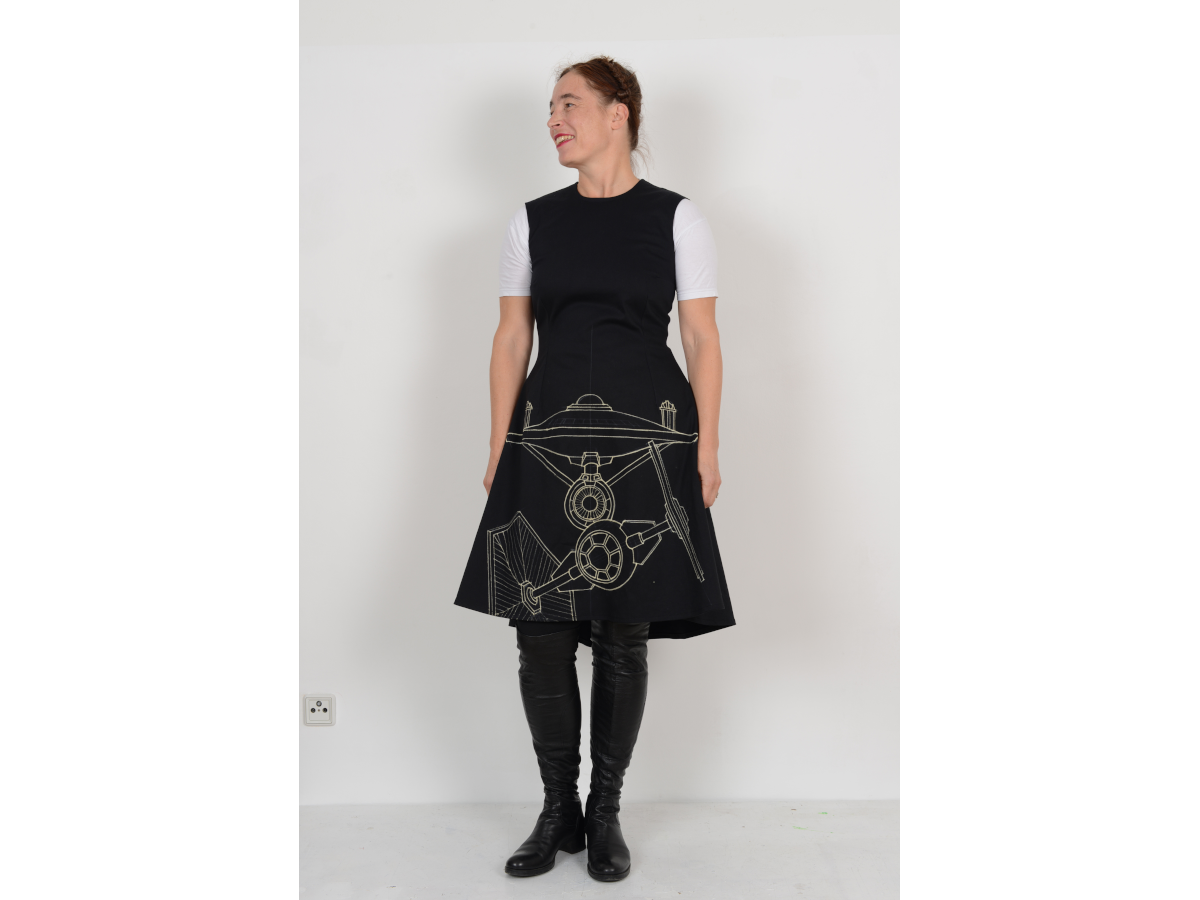
credit: Alexandra Eitzinger, 2017
Barbara Imhof is a space architect, researcher and educator. With an architecture and space studies background, she works across disciplines in her daily work – ranging from the arts to (space) engineering, natural sciences and humanities. Barbara is the co-founder and co-manager of LIQUIFER Systems Group that comprises experts from the above-mentioned fields. Projects focus on feasibility and scenario studies as well as designing and building mock-ups and prototypes. LIQUIFER partners with renowned research institutions and well-known enterprises to conduct research and technology development through contracts with the European Space Agency, the space industry and with the EU-Framework Programmes and other funding bodies.
LIQUIFER youtube channel
Participant of the Antarctic Biennale
Expedition member of the TBA Academy Deep Sea Minding
GrAB – growing as building
Living Architecture LIAR – transform our habitats from inert spaces into programmable sites
Regolight – solar sintering habitats on the moon
LAVAHIVE 3D printed habitat
EDEN-ISS greenhouse
MOONWALK – Human -Robot collaboration
SHEE – Self-deployable habitat for extreme environments
FASTER explore space safer and faster
References
– Samman N., Charrière J., As We Used to Float, publisher K. Verlag, September 2018, ISBN 978-3-947858-00-2
– Armstrong R. (ed.), Star Ark. A Living, Self-Sustaining Spaceship, Springer International Publishing Switzerland, 2017, p. 287ff
– Imhof B., Gruber P. (eds.), Built to Grow – Blending architecture and biology, edition Angewandte, Birkhäuser publishers, 2015; print version and ebook, ISBN 978-3-0356-0920-2
Stavros Katsanevas - Universe 2.0
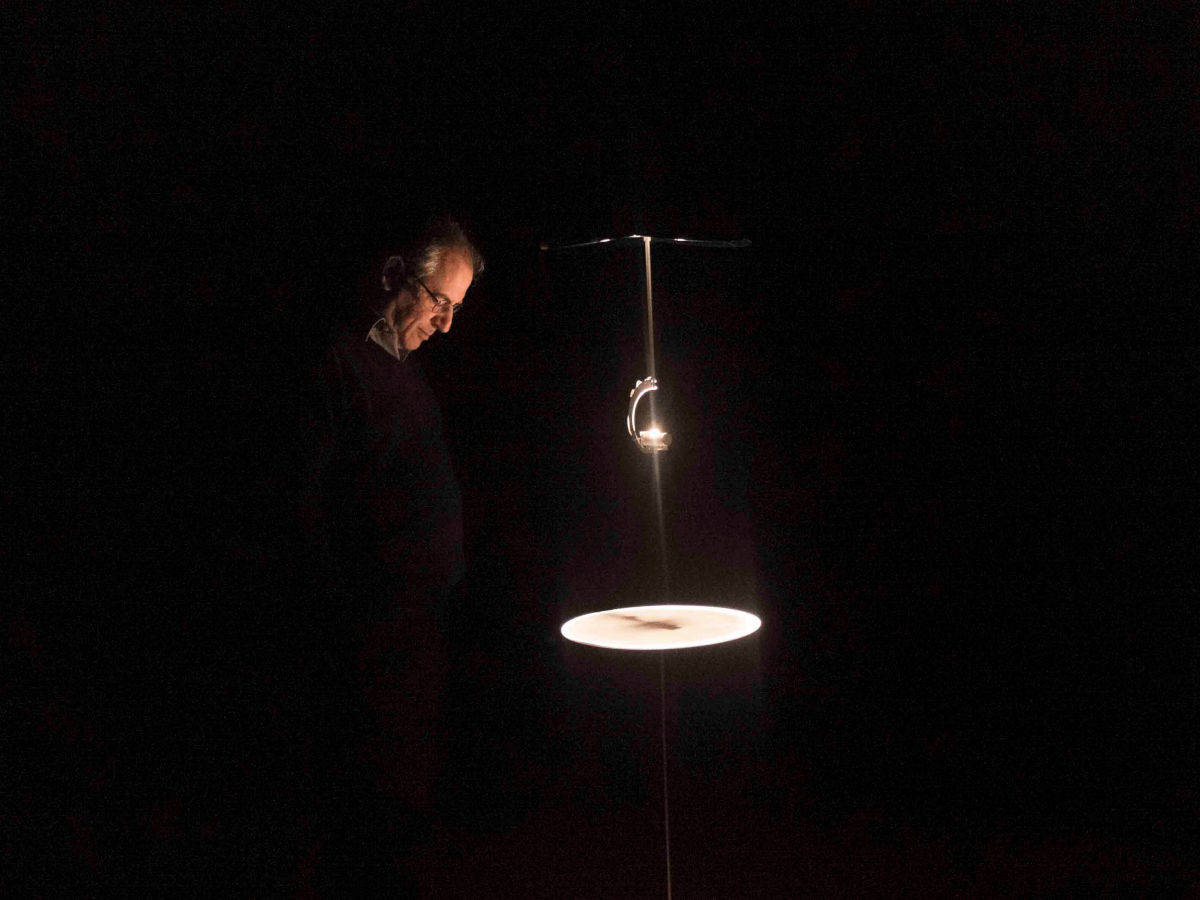
"Squaring the Circle", by Attila Csorgo
I will present the current work of the groupe I am coordinating, at the interface of art and science, under the name Universe 2.0. The aim of this project is to initiate an exploration, through a cross-reflection between artists and scientists, of the field that began with the recent discovery of gravitational waves, urgently questioning again the nature of space and time, their texture, the notions of origin and horizon, the role of information circulating in the Universe and its conservation or loss, the role of the human as observer and/or perturbator, more generally the nature of our embedding in the cosmos. In short, the overall image of a Gravitational Universe or Universe 2.0. I will present past experience with the connection between art and science as well as the preparation of future exhibition with the preliminary name « The rythm of Space ».
Stavros Katsanevas
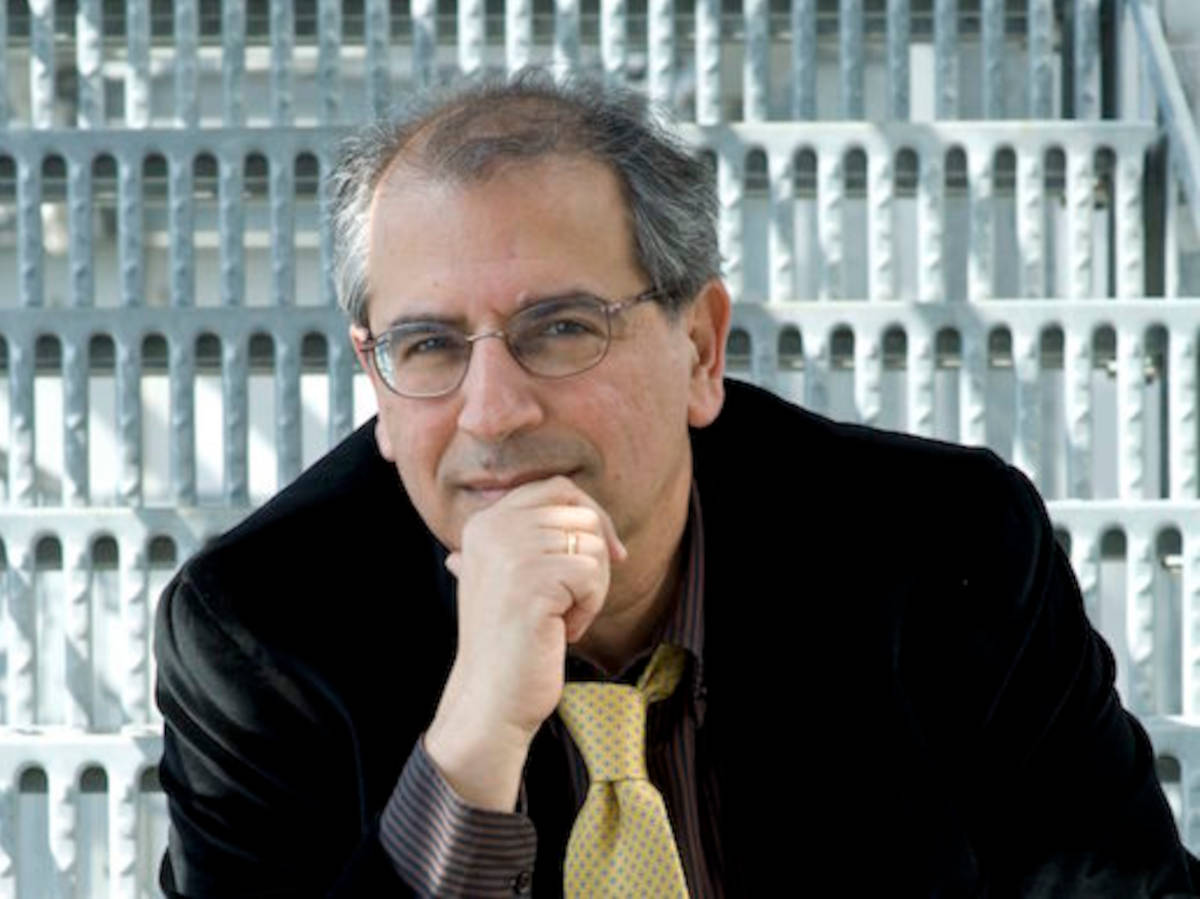
Professor University Paris Diderot,
Director European Gravitational Observatory
Stavros Katsanevas (male, born 1953)*professor exceptional class at University Paris Diderot, director of EGO, is the director of the European Gravitational Observatory (2018-). He has served as director of the Laboratory of Astroparticle Physics and Cosmology (APC) hosting the Paris Centre for Cosmological Physics (president George Smoot, Nobel Prize 2006) from 2014 till the end of 2017. He has also been deputy director of the National Institute of Nuclear and Particle Physics (IN2P3) of CNRS responsible for Astroparticle Physics and Cosmology (2002-2012), first coordinator of the EU funded ERANET ASPERA (2006-2012) gathering the European agencies funding Astroparticle Physics,first chairman of the European Consortium of Astroparticle Physics (APPEC) (2012-2015). His scientific contributions (over 400 publications), concern Particle Physics (QCD, neutrino properites, Higgs and supersymmetry searches) at CERN and Fermilab beam design (CERN to Gran Sasso), Astroparticle Physics (high energy neutrino telescopes), applications (smart sensors, medical physics) and phenomenological studies and simulations (Supersymmetry). He has written over 10 essays in different languages on the connection betwwen art and science, he is also member of the orientation board on Art and Science of the Foundation Daniel and NinaCarasso.
https://www.apc.univ-paris7.fr/APC_CS/fr/users/stavros
References
– Participation to the organisation of the art-science large retrospective of TomasSaraceno « On air » at the Palais de Tokyo 2018-2019, Article « In media Res » in the exhibition catalogue
– « /Une procession cosmique/ », opening essay in the book describing « /Transhumances/ » a flagship project of Marseille Capitale Culturelle Européenne 2013. Published in Actes Sud.
– « Commanditaire » of the work of art « /Squaring the Circle/ » by Attila Csorgo to celebrate the 100 years of Cosmic Rays, financed by the /Fondation de France/in the framework of the program « Nouveaux commanditaires ». The work was first exposed in the Museum of Modern Art « Palais de Tokyo », Paris and permanently exposed since June 2014 in the premises of the APC Laboratory.
Dr Ulrike Kuchner - What lies at the intersection of art and science?
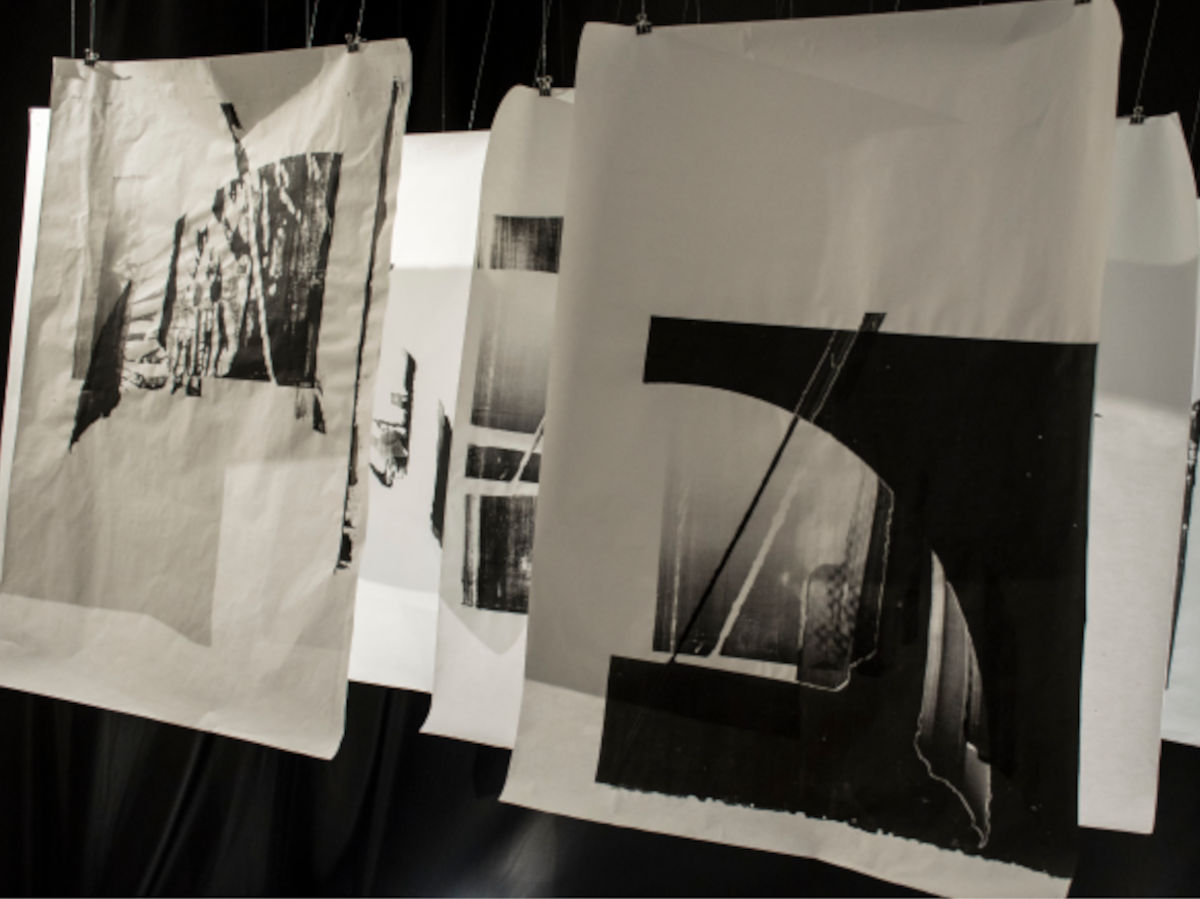
Caption: "Data with empathy", Ulrike Kuchner, silk screen on Offenbach bible paper, 2018, shown at Atlantis gallery, Bogotá, Colombia.
The pioneering astronomer Maria Mitchell marvelled: « We especially need imagination in science. It is not all mathematics, nor all logic, but it is somewhat beauty and poetry. »
Both science and art are human attempts to understand and describe the world around us.
Scientists and artists may speak different « languages » – each community has their own ways of communicating, ways of expressions, levels of sharing and exchange of material – but despite the disparities of their profiles, artists and scientists have a common ground: the fundamental desire to contemplate the understanding and experience of the physical world, and a creative approach to it.
In our science driven world, we often forget that data is collected, created and processed by humans and as such, data owns an anthropomorphic quality. The arts don’t need scientific data to be legitimate. The artist is not bound to a scientific goal, which permits him or her to approach material freely. In my current artistic work, I highlight human errors and mistakes by appropriating technical defects of the instruments I use in my work as an astronomer, and create new, artistic ones. In my contribution to the workshop, I will share thoughts and experiences I have made while working as a scientist, artist and curator at the intersection of the two fields, that can be broadly summarised as art and science, in an attempt to create a dialogue between equals.
Dr Ulrike Kuchner
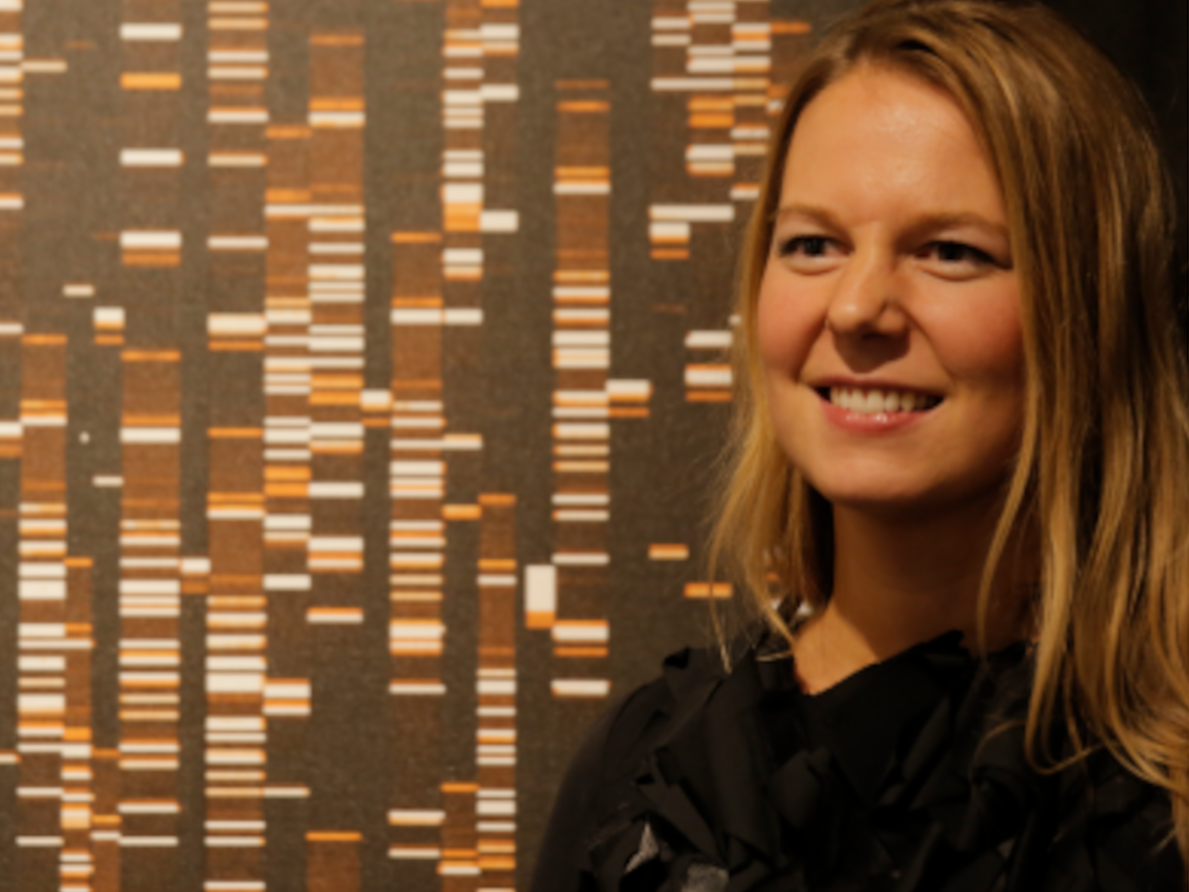
MA University of Nottingham, School of Physics and Astronomy
Growing up, the question « What do you want to be when you grow up? » was not an easy one to answer. So after high school, I followed both of my passions: I (simultaneously) studied Astrophysics at the University of Vienna, as well as Fine Arts/Paintings at the University of Applied Arts in Vienna, where I was born and raised. Today, after Masters and PhD degrees that took me to Australia, Chile, the US and Germany, I am an astronomer as well as a visual artist, currently based in the UK, where I work as a post-doctoral researcher for the University of Nottingham – and I make, exhibit and curate art. I came to Astronomy by perceiving the Universe as very beautiful, so aesthetics has always played an important role in my science practice. As an ArtScience artists I operate where art, culture and science intersect, using both backgrounds to find or reject interdisciplinary answers to overarching questions.
References
Snow, C.P. 1961. Two Cultures and the Scientific Revolution: Rede Lecture 1959. Cambridge: Cambridge University Press.
For re-rints e.g.
Popova, M., 2006-2019, « brain pickings blog »
Dr Rob La Frenais - Extract from Manifesto For A Republic Of The Moon
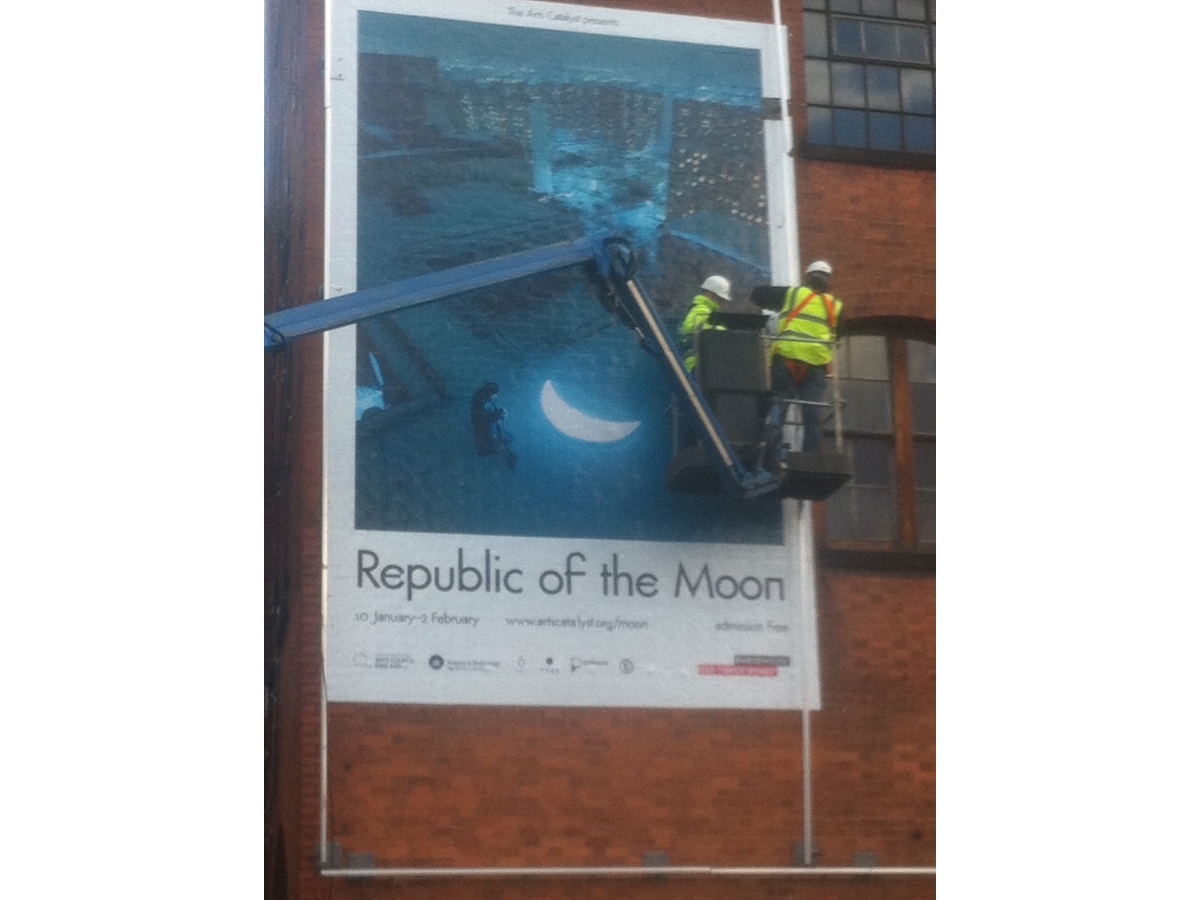
Wherever they are in the world, when humans and animals look up, they see the silvery disc of the Moon, in one phase or another, whether imperceptible or not. It is nearly five decades since humans walked on the Moon and we are surrounded by satellites and machines heading for Mars and other planets. However, the nearest humans can get into space is to perch on the International Space Station. Sooner or later, we are going back to the Moon, whether to mine it, to rehearse for a Mars mission or to live there. But how will human activity there reflect what has happened on Earth since the last Moon mission, to respond?to the diversity and political and social changes that have happened since?.In a provocative pre-emption of the future, a group of artists have already declared a Republic of the Moon, here on Earth, with diverse objectives. They range from Liliane Lijn’s desire to project the word ‘SHE’ on the Moon, to Agnes Meyer-Brandis breeding and training a new type of astronaut moon goose. Moon Vehicle activates the reactions of school children to India’s first lunar mission and Russia’s Leonid Tishkov carries his own private, personal moon around with him. For now, the Republic of the Moon exists in the mind. Every imaginative artist comes with built-in world-building equipment. This is a kind of controlled solipsism – the notion that one is at the centre stage of a lifelong drama or movie that is being put on by actors for one’s own benefit. Out of hand this can be dangerous and unbearable for others, but some artists can utilise and benefit from this effect. So, like everything in this messy universe, if there is a Republic of the Moon, or if artists or moon-geese colonise the Moon, it will be done out of serendipity, or simply by accident. Towards a Republic of the Moon!
Dr Rob La Frenais
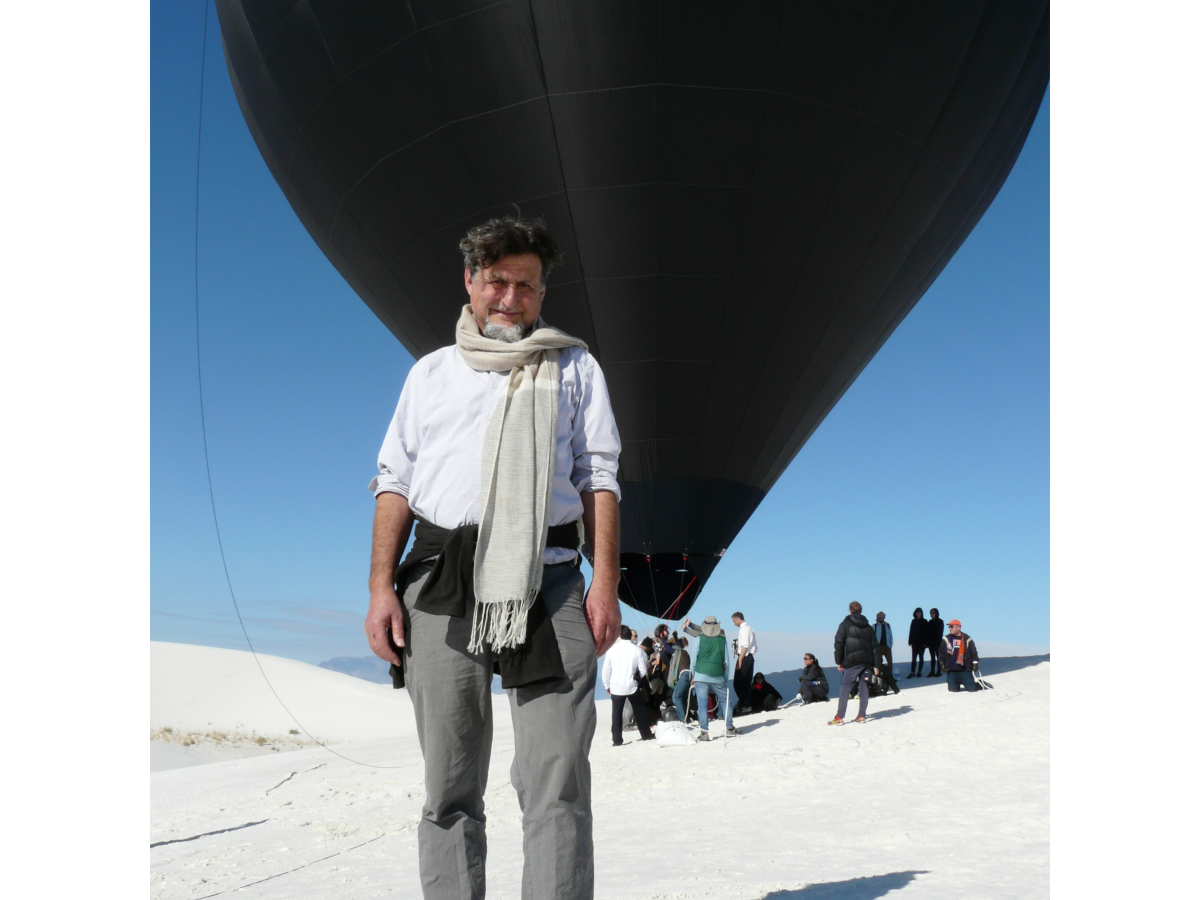
Independent curator and author
Rob is working on a new book about art on the Moon –Mirroring the Moon, commissioned by Intellect Books, University of Chicago Press. He was the first curator to experience zero gravity at Star City in Moscow in 1999. His exhibitions include Republic Of The Moon with The Arts Catalyst, Aerosolar/Space Without Rockets and Aerocene with Tomas Saraceno in Texas and New Mexico; Exoplanet Lot at Maison des Arts Georges et Claude Pompidou, France; and No Such Thing As Gravity shown at FACT, Liverpool in 2016 and the National Taiwan Museum of Fine Art in 2017. His publications include Self Etc., Intellect Live (2018) and Manifesto for The Republic Of The Moon, Arts Catalyst, 2014. He writes for Art Monthly, Makery.info France and Artlink Australia.
www.roblafrenais.info
References
– http://roblafrenais.info/current-projects/– 67th International Astronautical Congress 2016
SPACE EDUCATION AND OUTREACH SYMPOSIUM (E1) Space Culture -Public Engagement in Space through Culture (9) Author: Dr. Rob La Frenais,Bournemouth University, United Kingdom, Paper ID: 34859 oral « Space without Rockets: Cultural and Human Factors Approaches to Sustainable Space Travel.
Ekaterina Lapina-Kratasyuk - Showing the Unimaginable. Space Knowledge in the Media: between Public Science and Artistic Creativity
Showing the Unimaginable. Space Knowledge in the Media: between Public Science and Artistic Creativity
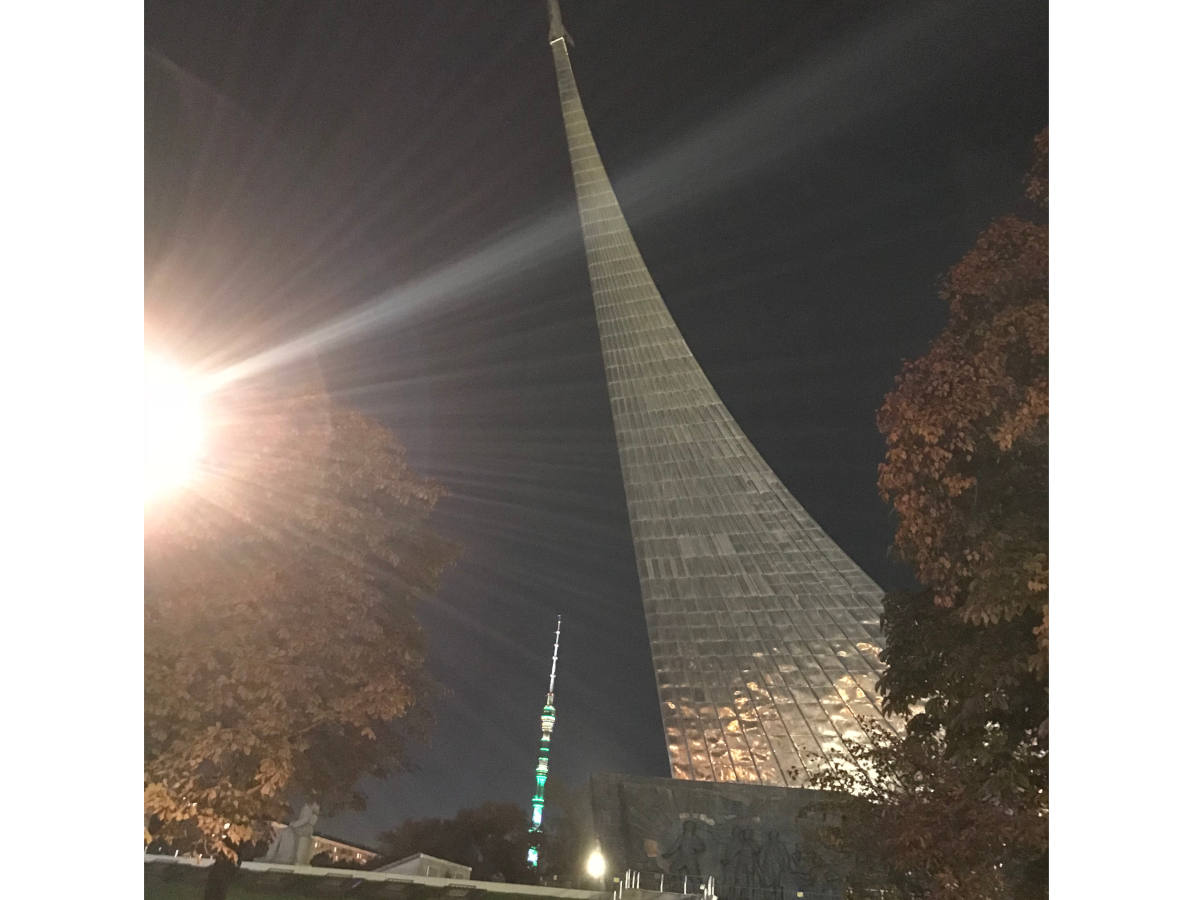
Moscow Space Museum
Since 2017 our research group from the Higher School of Economics has been collaborating with the Moscow Space Museum on the project « MediaSpace » to study and develop media formats that organize (and normalize) the transfer of knowledge among scientists, artists, museums, industry and business. Besides academic work and publications, we coordinate the annual conference MediaSpace, which brings together astrophysicists, popular science specialists and educators, artists, astronauts, astrophotographers, media professionals and bloggers, and businesspeople.
In my talk at the Leonardo Space, Art, Science & Culture Workshop, I will first give a brief overview of the public’s knowledge about space research problems in general and in contemporary Russia in particular, using the issues that confront Russian space museums to examine how they transfer space science to society. In the second part of my talk, I will concentrate on my research on astrophotography and the problems of visually representing big space data for the general public: in museum exhibitions, educational projects, art works etc.
Ekaterina Lapina-Kratasyuk
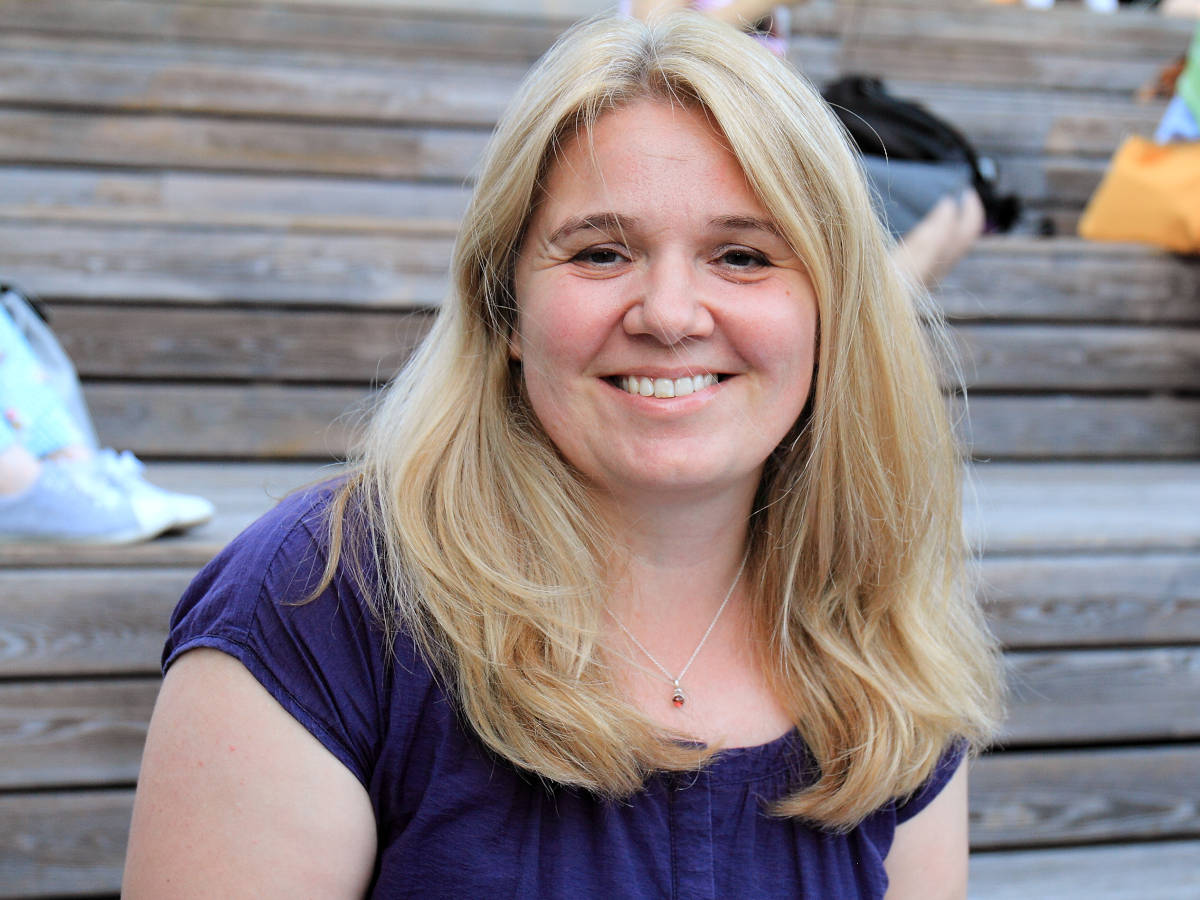
PhD, Associate Professor, Faculty of Communication, Media and Design, National Research University,
Higher School of Economics (Moscow, Russia)
E. Lapina-Kratasyuk received her PhD in Media & Cultural Studies in 2002. From 2014-2016 she was the head of the research group « Digital City ». After graduating from UCLA’s Institute for Pure and Applied Mathematics program Culture Analytics in 2016, E.Lapina-Kratasyuk directed a MediaSpace research project, done in collaboration with the Moscow Space Museum and dedicated to Space representations in media, including cinema, astrophotography, videogames and Big Data 3D installations and their aesthetic, educational, political and economic aspects. She is an organizer of the annual international conference MediaSpace and a public lecture course « Space and Sci-Fi » (March-May 2019).
https://www.hse.ru/org/persons/11730611#sci
http://mediacosm.tilda.ws/
References
Moscow Space Museum (Museum of Cosmonautics)
Vanessa Lorenzo - Always Calling Home
Always Calling Home
The project started as part of a South African-Swiss exchange and Artists-in-labs program at the Zurich University of the Arts (ZHdK), supported by Pro-Helvetia. Vanessa’s research focuses on the potentials of scientific instruments to unveil the invisible traces of rocks wandering over the Earth. Asteroids, meteorites and comets are eternal matter scattered around us. Rare minerals, gas, and alien bodies that existed within and outside the original body, from which they got expelled, then coagulated together, to be extracted or expelled again. Roaming the void they are seeking home, reflecting beams of light and fluctuating within a range of frequencies in and out of the visible spectrum. Sentinels secure their positions to capture patterns, make meaning out of waffled memories and ultimately enabling droning dialogues of the yet-to-come. What kind of memories of the past-futures would they bring? The artist looks into different meaning-making processes in apparently opposite cultures. The rocks are the medium for future-(story)telling with the potential to trigger collective hysteria, neo-shamanist rituals, and post-anthropocentric social dreaming.
Vanessa Lorenzo
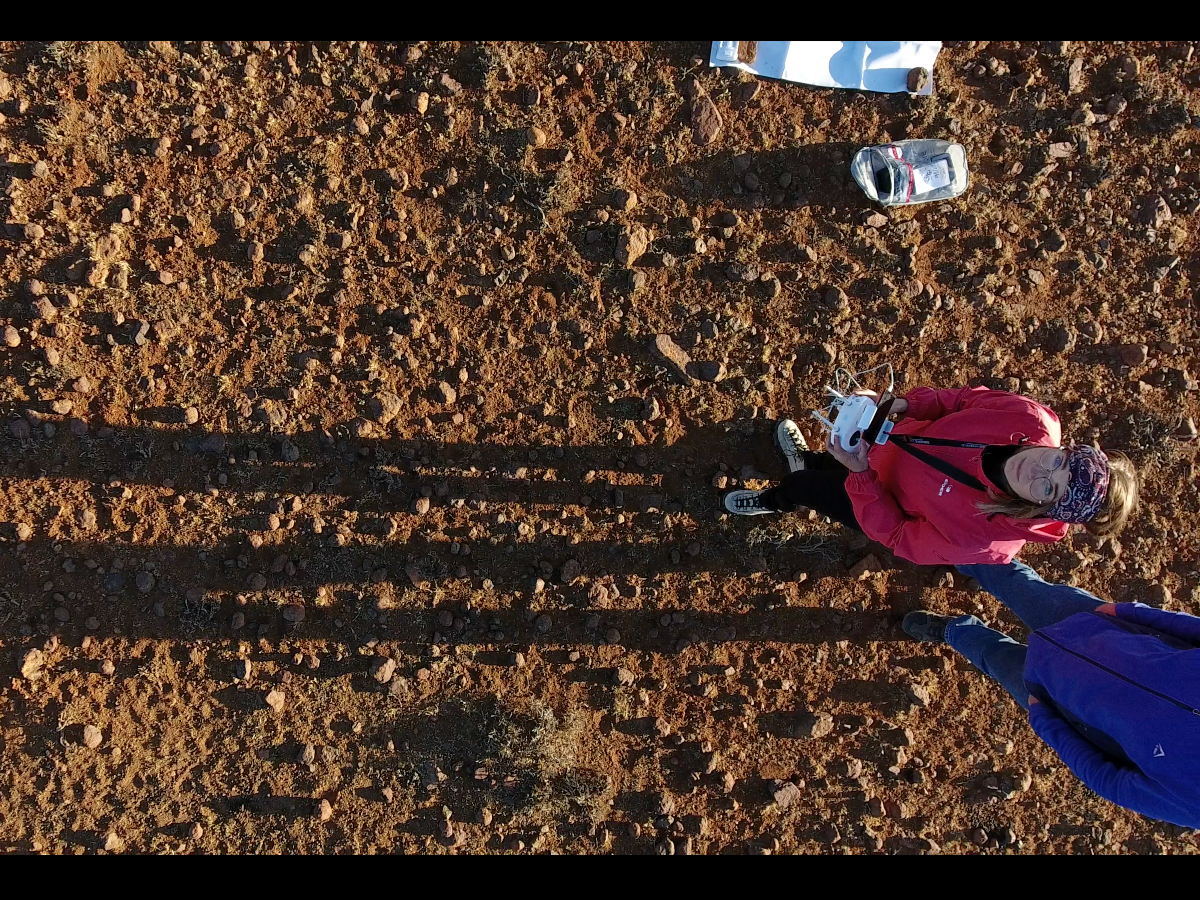
Independent designer and artist
@Hybridoa
Art and Science workshopologist
@Hackuarium
Vanessa Lorenzo is a researcher and designer working at the crossroads of Media, Art and Biology @Hybridoa. Trained as product design engineer and media designer, she creates fictional scenarios embedding people, living organisms and matter into devices forming new media ecologies. Also, she nourishes (from) and believes (in) communities of hackers / artists / citizens working in alternative spaces to have the power to subvert the dominating role of traditional science and technospheres and therefore, guide us towards a more inclusive knowledge-production. I research about the role of design to influence social imaginaries through workshops and interfaces that focus on the radical poetry of the more-than-human.
Roger Malina
Roger Malina
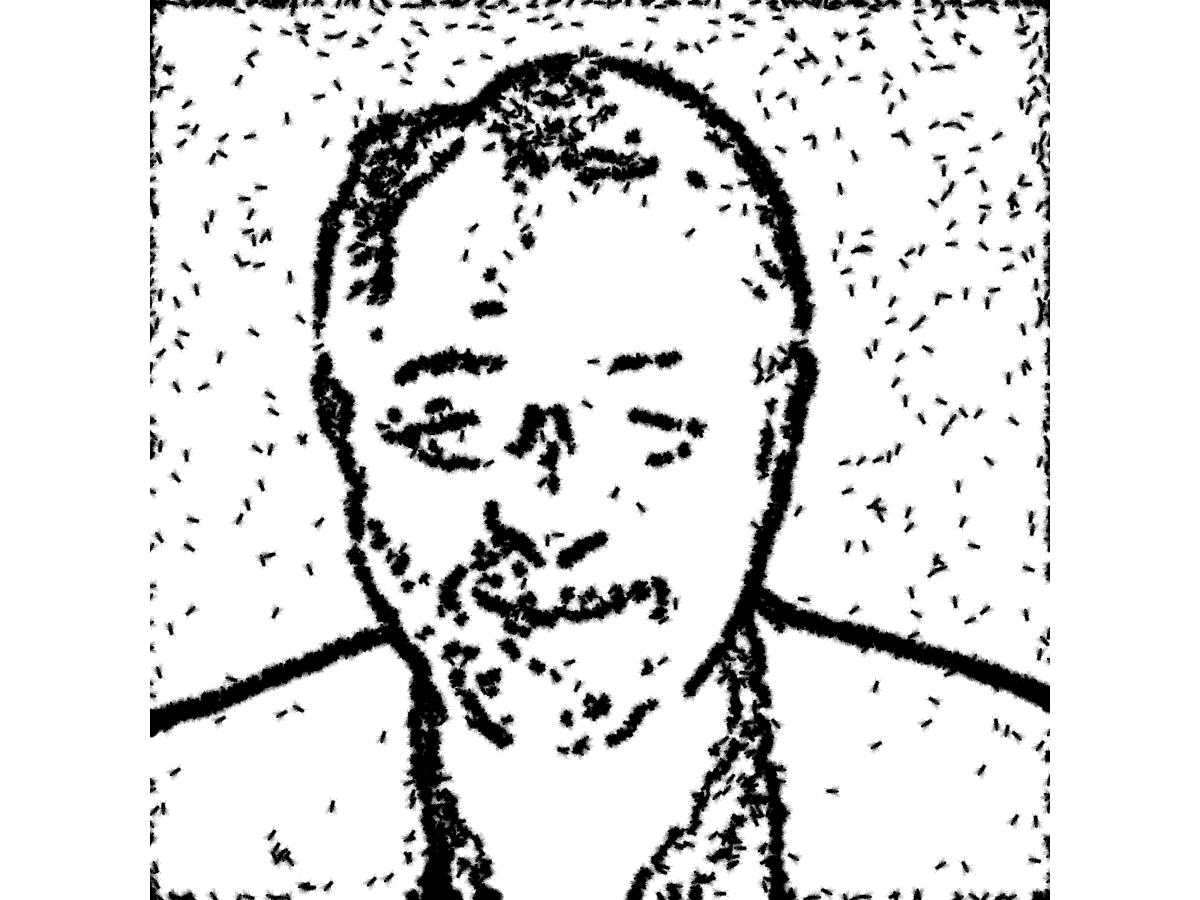
"Portrait on the fly" by Mignonneau & Sommerer
Distinguished Professor of Arts and Technology and Professor of Physics
UT Dallas and Executive Editor Leonardo Publications MIT Press
Roger Malina is an art-science researcher, astronomer and editor. His UTD ArtSciLab, co-directed by Cassini Nazir, focuses on research that requires close collaboration between scientists and artists, in particular developing data exploration and data performance. The lab has developed a transdisciplinary apprenticeship program. Other research includes experimental publishing in collaboration with MIT Press and Leonardo/ISAST and OLATS. He is former director of the Observatoire Astronomique de Marseille Provence (OAMP) in Marseille. He was the PI of the NASA EUVE satellite which mapped the whole sky for the first time in the extreme ultraviolet. He is the Executive Editor of the Leonardo Publications at MIT Press, including the new arteca.mit.edu art science technology platform. Roger Malina obtained his BS in physics from Massachusetts Institute of Technology in 1972, and his PhD in Astronomy from the University of California, Berkeley in 1979. He has been awarded an Honorary Doctorate from the Polytechnic University of Valencia and the Ars Electronica Golden Nica for the Leonardo Community of Villages
http://malina.diatrope.com/
http://www.leonardo.info
https://www.olats.org
Regina de Miguel - Aura Nera
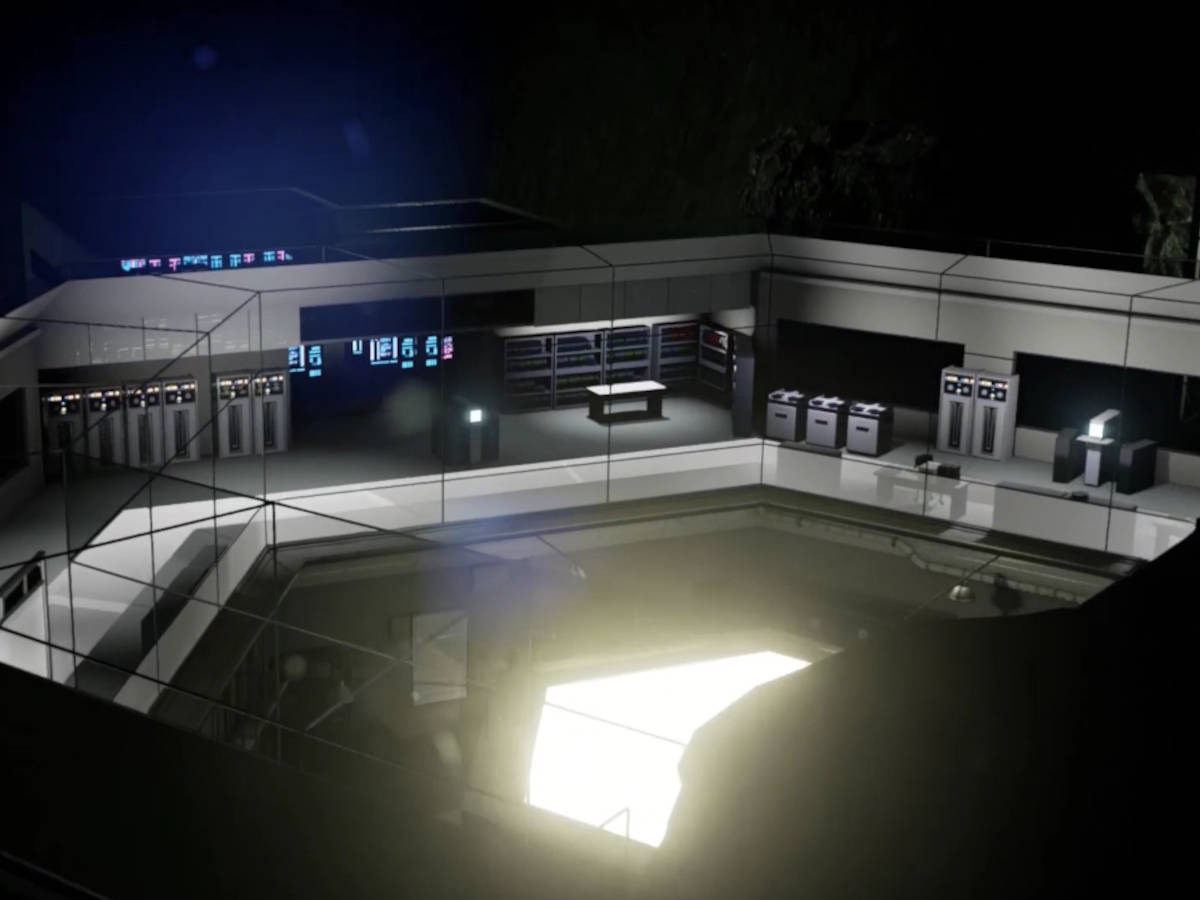
screenshot from "A Story Never Told from Below", 2015, Vídeo HD et 3D, 01:09:38.
Aura Nera recreates the self-sufficient semiosphere of science, a cultural « stratum » condensed with symbols and meanings that have an archetypal scenario: the laboratory. Nevertheless, in this case, it functions as a laboratory of artificial cultures, free of biological manifestations sensitive to human control. A fictional scenario that becomes a bank of samples, a collection of geological, herbal prototypes or immaculate rooms of natural history museums, and other controlled environments that the artist, Regina de Miguel, visited in contexts like the Centro de Astrobiología associated with NASA in Madrid, the laboratories for in vitro cultures of endangered species of the Botanical Gardens in Sao Paulo, the Vulcanology Institute at the Universidad de Barcelona, the Natural Sciences Museum in Santiago de Chile and the Seed Bank of the city of Vicuña, also in Chile.
Regina de Miguel
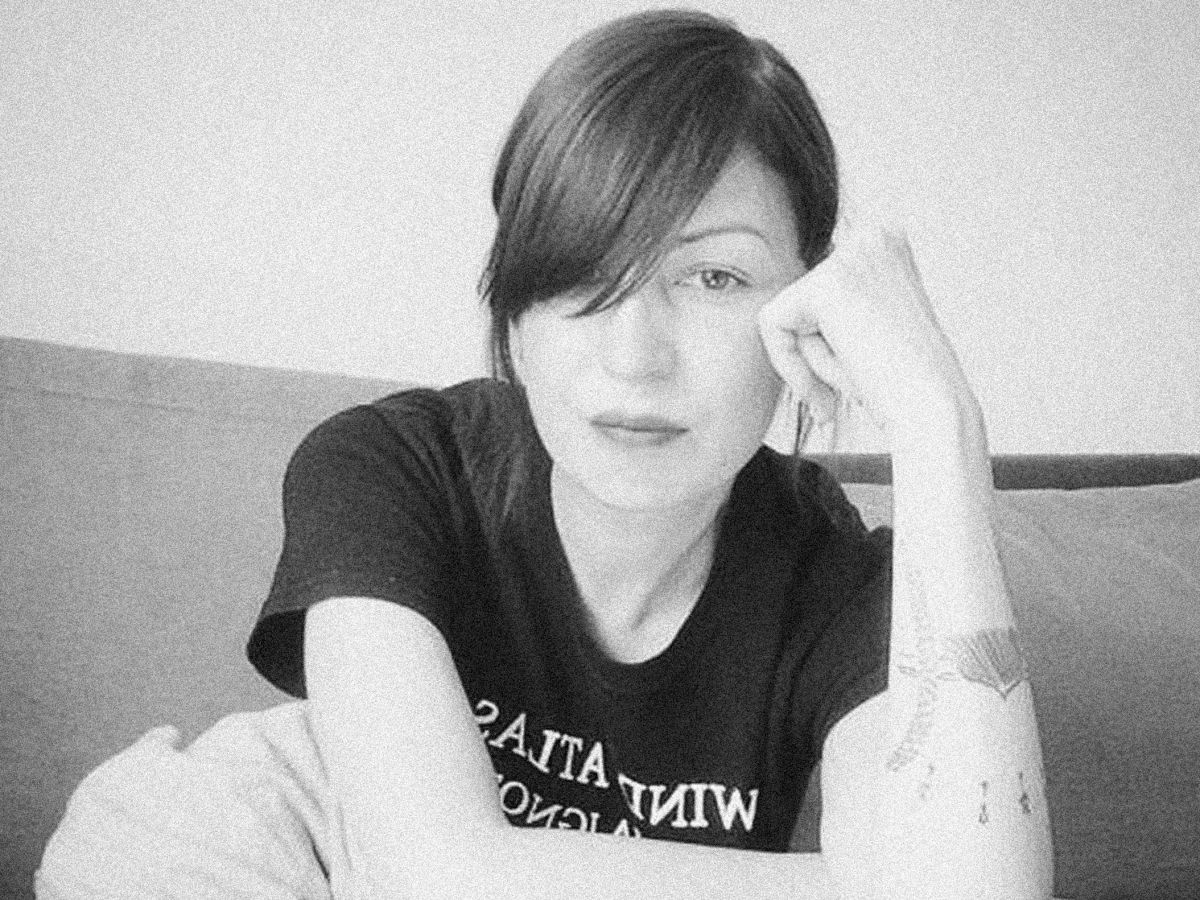
Artist, researcher and teacher
Regina de Miguel works as an artist through critical and interdisciplinary agency in processes and convergences focused on producing hybrid objects and knowledge.
She has set up solo exhibitions in: I´m part of this fractured frontier, C3A Córdoba, 2018; Aura Nera, Santa Mónica, Barcelona, 2016; Ansible, Maisterravalbuena Gallery, Madrid, 2015; All knowledge is enveloped in darkness, Kunsthalle Sao Paulo, 2014; Nouvelle Science Vague Fiction, General Public, Berlin 2011, El aire aún no respirado, MUSAC, León 2008.
She has also exhibited in group shows as: Cosmos. Film Programme. Tentacles Gallery, Bangkok, 2019; .Celda Unidad, Cultural Institute of León, Guanajuato, México, 2018; Capitalo, Chthulu, and a Much Hotter Compost Pile at Kunstraum Kreuzberg/Bethanien, Berlin, 2018; Technosphärenklänge #5: Performance with Lucrecia Dalt. Haus der Kulturen der Welt, Berlin, 2018; Adverbios Temporales, Centro Centro, Madrid, 2018.
References
– Llurba Ana,Post-humanism and Utopia in Aura Nera by Regina de Miguel
– A Brief History of the Future
– Pereira Godofredo (Ed.), Savage Objects, Forensic Archictecture
Dr. Susmita Mohanty - India's Stellar Journey: A Rocket on a Bicycle to Mars-shot
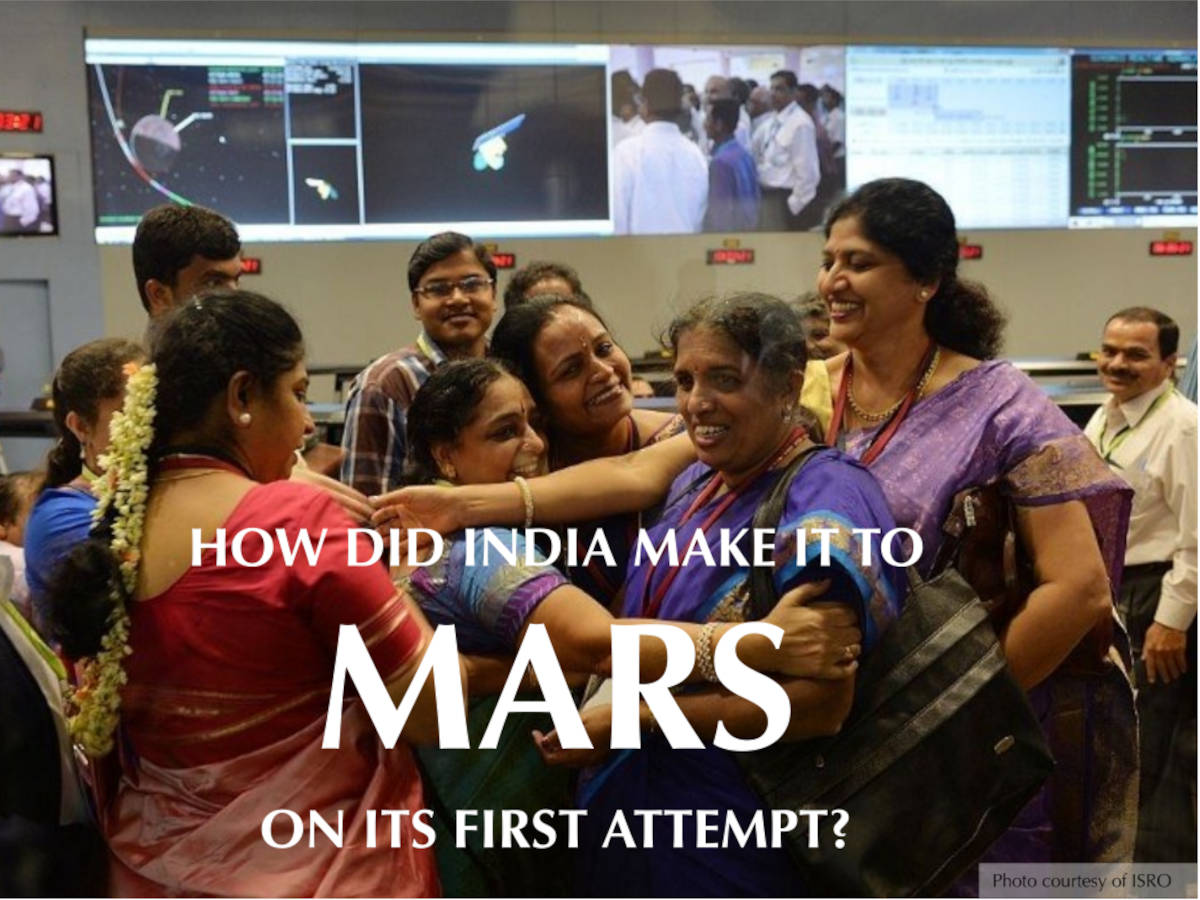
ISRO women celebrating the arrival of MOM on Mars at the mission control in Bangalore in 2014 (Photo Credit: ISRO)
The presentation begins with my personal journey – as global space entrepreneur raised amongst the pioneers of the Indian space program. It then dovetails into a kaleidoscopic narrative of India’s 55-year old space journey – then, by example, sets the tone for how the Eastern Hemisphere (outside the context of ‘space race’ and cold war) is reinterpreting, and redefining the future of space travel, exploration, utilization; and how the East differently perceives space, philosophically, culturally, and ecologically.
India launched its 1st experimental rocket in 1963, set up a fledgling office at the Mary Magdalene church in Kerala (courtesy, a bishop, his parish and local fishermen). Cut to 2014, when India became the first nation to make it to Mars on its first attempt, the media got fixated on the ‘uber-low’ price tag, which was really just fine print. What was mind-blowingly-cool is that the Indian Space Research Organization (ISRO) pulled-off a planetary mission in just 14 months after the budget was approved; most space agencies take 5-7 years for a planetary mission.
ISRO is now a mature organization, a landmark institution in own right. It designs, builds, launches satellites routinely; uses its space assets for telecommunication, remote sensing, meteorology, and GPS for applications to improve the quality of life of its people. In 2008, India launched its planetary exploration mission debut with a Moon orbiter. ISRO has one of the best gender ratios and has now set its goal to launch humans into Low Earth Orbit (LEO) by 2022.
Dr. Susmita Mohanty
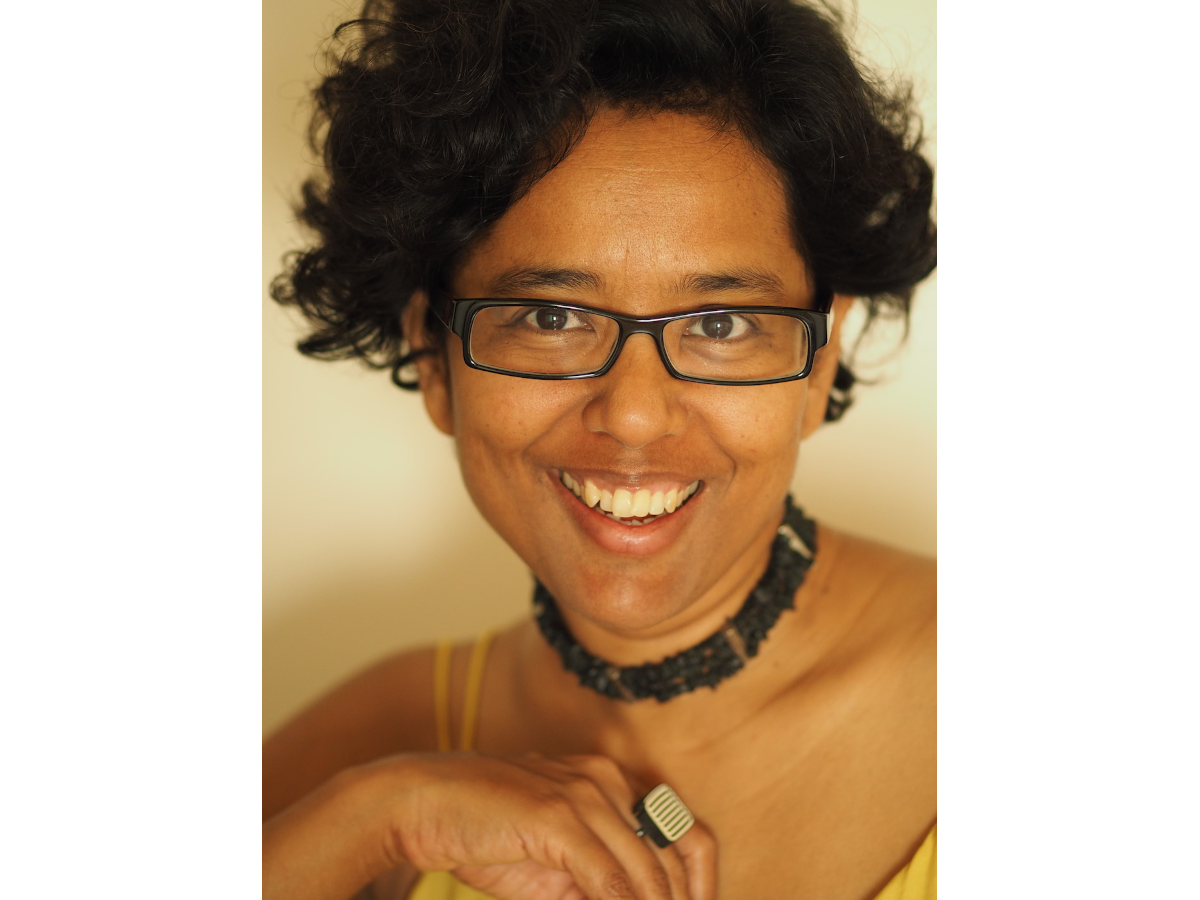
Photo Credit: Siddharth Das
Co-Founder & CEO, Earth2Orbit
Co-Founder & Principal, LIQUIFER Systems Group
Susmita Mohanty is the only space entrepreneur in the world to have started companies on 3 different continents. She is the CEO of Earth2Orbit, India’s first private start-up and her third venture. She has co-founded two other companies, MOONFRONT in San Francisco [2001-2007] and LIQUIFER in Vienna [2004-ongoing]. Prior to turning entrepreneur, she worked for the International Space Station (ISS) Program at Boeing in California and did a short stint at NASA Johnson working on Shuttle-Mir projects. Educated in India, France, and Sweden, Susmita holds multiple degrees including a PhD. In 2017, she was featured on cover of Fortune Magazine. More @ www.themoonwalker.in
Marko Peljhan - SYSTEM 317 - HYPERSONIC
Is it possible to abandon rapidly deteriorating planetary conditions through a process of « reverse conversion »? Using the metaphor « lighting a match and keeping it lit in a hurricane » I propose a construction of a vessel for absolute autonomy and eventually piracy. A counter privateering machine for the times when the global empires are once again clashing with immense irresponsibility and destructive potential.
Marko Peljhan
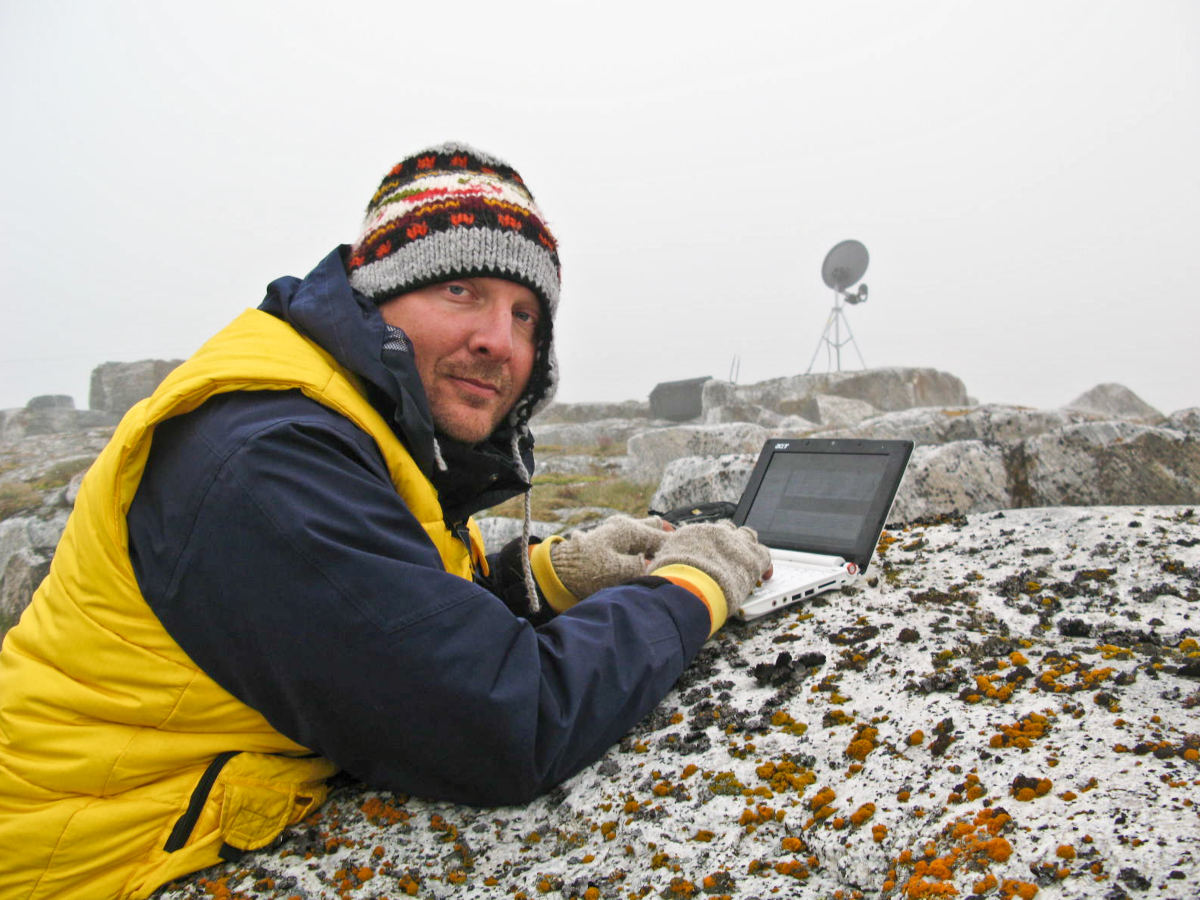
Artist, international coordinator SPACE-SI, director SYSTEMICS LAB, chair MAT @ UCSB
Marko Peljhan is a theatre and radio director, conceptual artist and researcher. From 1994 on he works on Makrolab, a project that focuses on telecommunications, migrations and weather systems research in an intersection of art/science/engineering; the Interpolar Transnational Art Science Constellation and the Arctic Perspective Initiative. His work has been presented globally. He serves as professor and director of the MAT Systemics Lab at the University of California Santa Barbara, the Chair of the Media Arts and Technology program at UCSB, the coordinator of international cooperation of the SPACE-SI Slovenian Centre for Space Sciences and Technologies and editor at large of the music label rx:tx. In the radio spectrum he is known as S54MX.
Sarah Jane Pell - Spatial Performance Environment Creative Training Realities for Astronauts (SPECTRA)
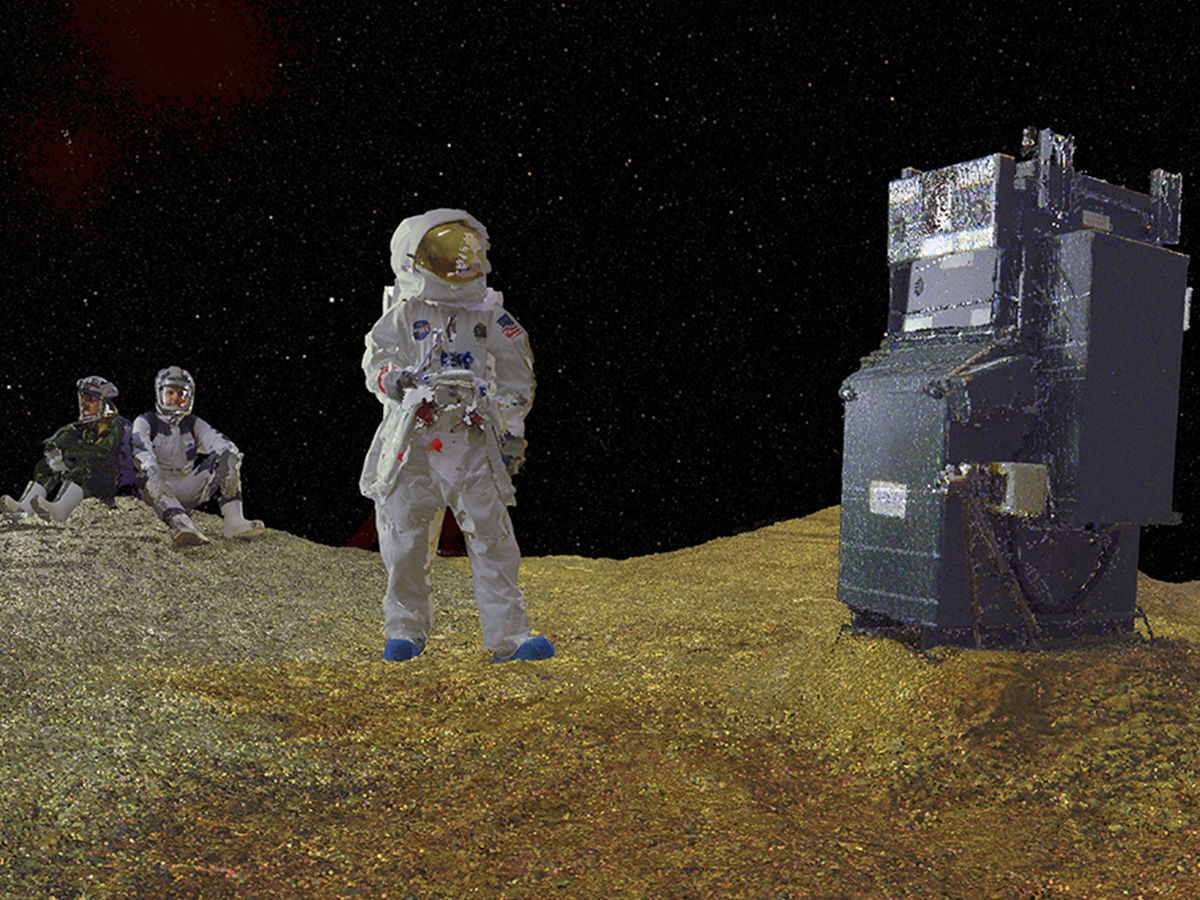
SPECTRA Spatial Performance Environment Creative Training Realities for Astronauts LiDAR Tableaux (2018) Sarah Jane Pell in collaboration with David Barnes, MIVP and Lunares III Crew.
Imagine following the body’s natural edge to the abyss of space to experience a new world perceived and expressed by the extra-terrestrial body. Here on Earth, I contend with the design of tactical laboratories promoting experimental arts practices to support performance research within remote isolated confined environment (ICE) operations. The idea is to create, simulate or inhabit space analogue sites and conditions. I find these scenarios challenge me to prioritise presence and absence in unique ways. Therein my perception, and behaviour alters, producing a new body, a new body of art, or new art. Collaborating with the Monash Immersive Visualisation Platform, we currently reconfigure tools testing spatial awareness during terrestrial analogue EVAs, post-processing large data transmission between global sites for affective visualisation in the CAVE2, Virtual Reality, Dome and Future Control Room. Artefacts include immersive media, mixed reality, new interactive systems for live art, translocation communication, and interdisciplinary human performance research. Outcomes are at once real and speculative; poetic and practical. They have differing technical cultural value and human factors benefit for crews and audiences. I now ponder how is the simulation within the simulacra, the science within the art, becoming an evolutionary survival tool itself?
Sarah Jane Pell
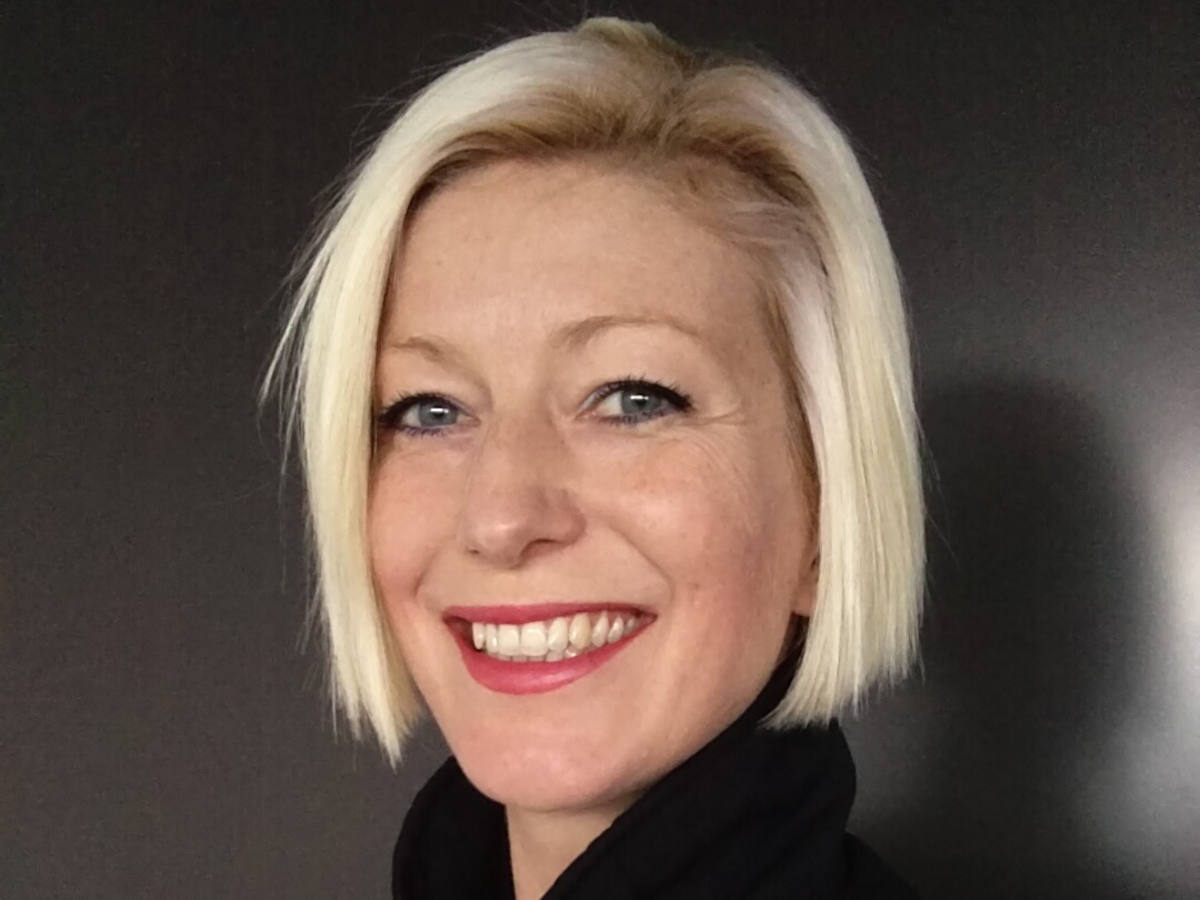
Artist Astronaut
Visiting Associate Professor, RMIT University
Adjunct Associate Professor (Research), Monash University
Dr. Sarah Jane Pell’s experimental practice transits from Sea to Summit to Space. A commercial diver and founder/director of the Aquabatics Research Team initiative 2002-12, she expanded creative research of human performance underwater by building extensive experience in remote isolated confined environment (ICE) maritime and diving operations. Sarah attempted to summit Mt. Everest (2015) and began civilian spaceflight training (2016) to investigate ‘Performing Astronautics’. Dr. Pell collaborates with artistic, scientific and technical partners to understand and support the body and cultural expression of extreme performance. Awards include: Australia Council Fellow. Australia Council Arts Leader. Gifted Citizen – Hon. Mention. TED Fellow.
www.sarahjanepell.com
www.artistastronaut.com
www.spaceanalogue.com
References
– Pell, S.J. (2017) Performing Astronautics: following the body’s natural edge to the Abyss of Space, Virtual Creativity, Vol. 7, Number 1, 1 June 2017, pp. 53-61(9) Intellect Publishing
– Pell, S.J. (2014), ‘Aquabatics: a post-turbulent performance‘, Performance Research, Vol. 19, Issue 5. On Turbulence, Issue Editor: Prof. Paul Carter. Taylor & Francis, Routledge; 19(5):98-108
– Langston, S., Pell, S.J. (2015) What is in a name? Perceived identity, classification, philosophy, and implied duty of the « astronaut ». Acta Astronautica (Impact Factor: 0.82) Elsevier. 05/2015; 115 (Oct-Nov): 185-194.
RYBN.ORG - "The Great Offshore : Luxembourg"
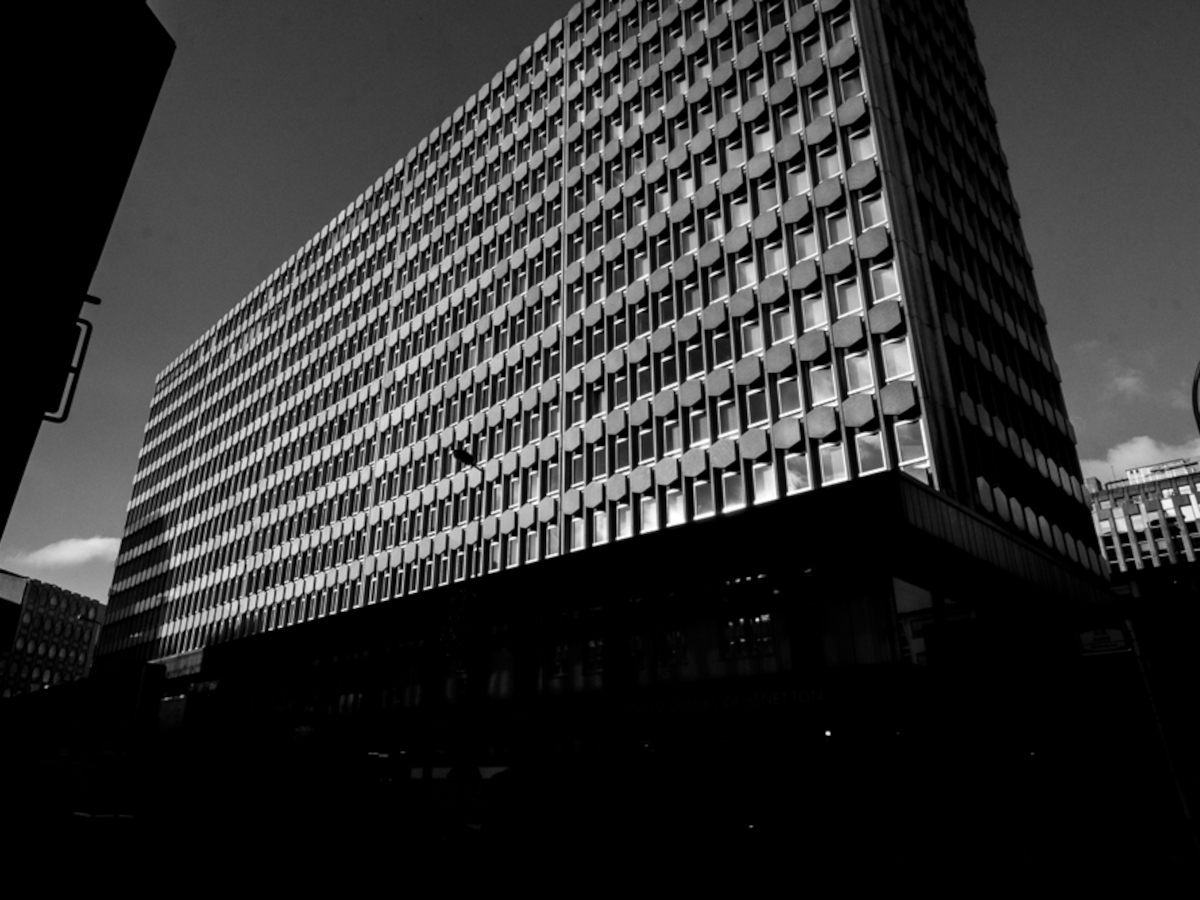
Luxembourg Ministry of Economy and Space Agency
« The Great Offshore : Luxembourg » is a speculative investigation on Luxembourg Space Mining plans, and on space adaptive governance. This study is part of a larger project, « The Great Offshore », which aims to reverse the traditional understanding of offshore banking as a marginal phenomenon, to reposition it at the center of the economic system. The hypothesis is fueled by field researches, archives, documents and interviews, collected in Dublin, the City of London, Zürich, Pfäffikon, Vaduz, Jersey & Guernsey, Wilmington, the Bahamas, the Cayman Islands, Malta, Luxembourg, the Netherlands.
RYBN.ORG
Extradisciplinary research platform
RYBN.ORG is a Paris-based collective founded in 1999. The collective follows an extra-disciplinary investigation methodology on the functioning of complex and esoteric phenomena and systems – high frequency markets structure, algorithmic trading strategies, offshore banking networks, kabbalah hermeneutics, digital labor and human computers, computer viruses, etc. Their works have been presented in many art centers and festivals.
References
– Final report, The Hague Space Governance Working Group
– Opportunities for Space Resources Utilization Future Markets & Value Chains
– Aude Launay, interview for 0/2
Miha Turšič - From Space Technology to Space Ecology
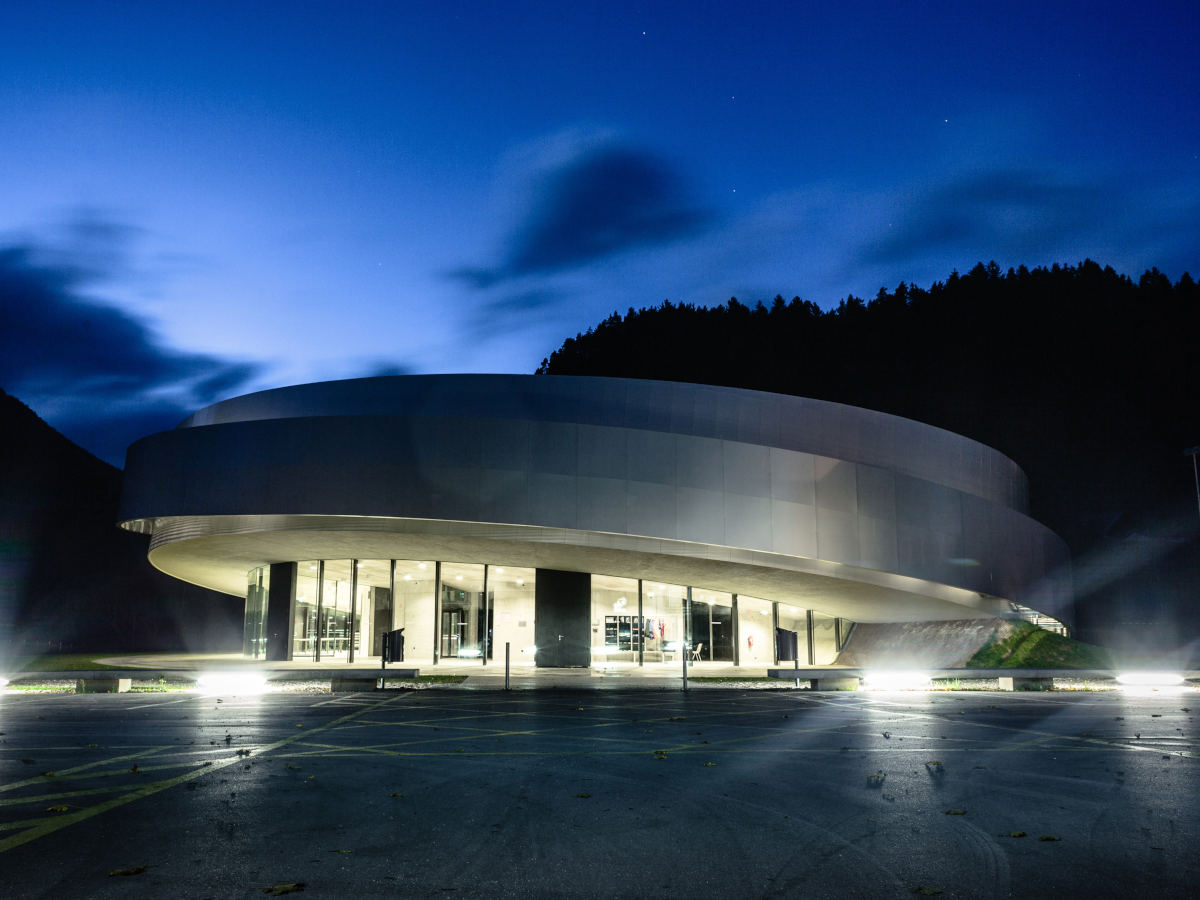
Cultural Centre of European Space Technologies - KSEVT
In times of rapid environmental change, which can render today’s lively environments on Earth extreme, we cultivate capacities that help us survive; as outer space has taught us, we can only do this collectively, with the complex networks that compose ecologies. The oeconomus, the human-machine, has to also begin thinking and seeing itself through and with the oikos. Such a salto mortale requires a systematic and persistent effort and is the reason why the search for ways through which to include environmental agents in the production of art is so important.
Miha Turšič
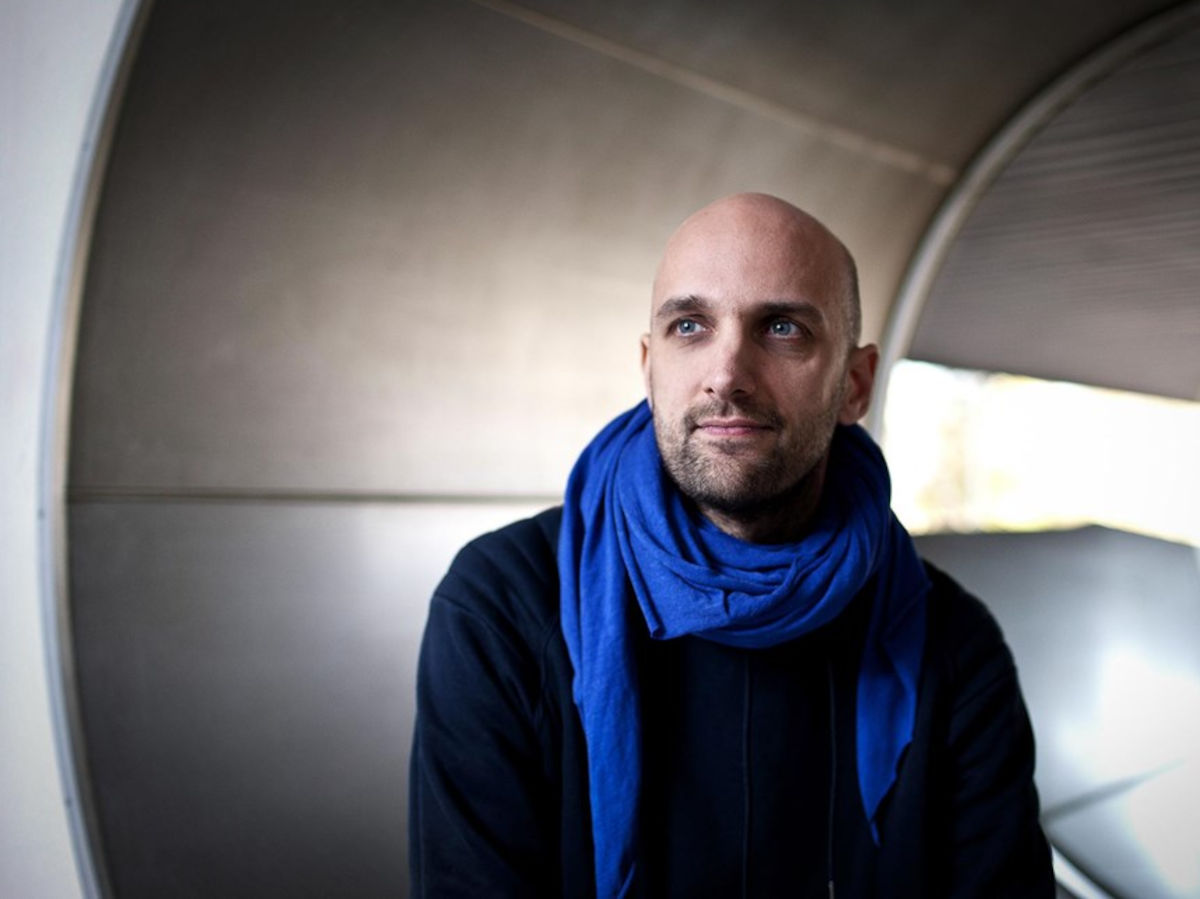
Artist and Researcher
Waag, KSEVT, Postgravityart
Miha Turšič (1975) is an artist, designer and researcher, dedicated to the development of arts and humanities in outer space. He designed works in reference to human condition in outer space, developing post-gravitational art and artistic satellites, founded Cultural Centre of European Space Technologies, an institution with dedicated Cultural Space Programme and actively developing cooperations between space and art institutions in Europe, Russia, United States and China. Currently he works at Waag as a concept and project developer, specialised for art-science interactions.
https://mihatursic.squarespace.com/
References
– Miha Turšič, Becoming an Oikos, ESA ESLAB conference 2017
– Špela Petrič, Miha Turšič, Becoming.a(Thing): An Artists’ Perspective on High Performance Computing, © ISAST
– M. Murnik, Š. Petrič, M. Turšič, Beyond Life Cycles, ECAL 2013:- The Twelfth European Conference on Artificial Life, July 2013
Marco Volponi - An overview of the MELiSSA Project

A view inside the MELiSSA
Living in space is tough. Basically space lacks all the elements needed to sustain life, so astronauts have to carry all the resources essential for their survival: first and foremost, water, oxygen and food. The furthest we want to go from Earth, the more difficult it becomes to resupply the astronauts: the necessity to recycle these resources quickly becomes unavoidable. So, the idea of « closing the loop » arise, and this is exactly what the MELiSSA project is trying to achieve. Taking inspiration from small lakes processes, MELiSSA harnesses the power of the most suitable physical, chemical and biological reactions to create a system able to regenerate food, oxygen, potable water. The parallel and concurrent demonstrators both on ground and on orbit are getting this concept every day closer to reality. In the meantime, down on Earth, we all benefit from these studies: various spin-off have arisen, from a bacteria that fights bad cholesterol to treating grey water in an Antarctica base, passing through solar-powered water generator in Morocco and buildings reducing CO2 with algae in Paris.
Marco Volponi
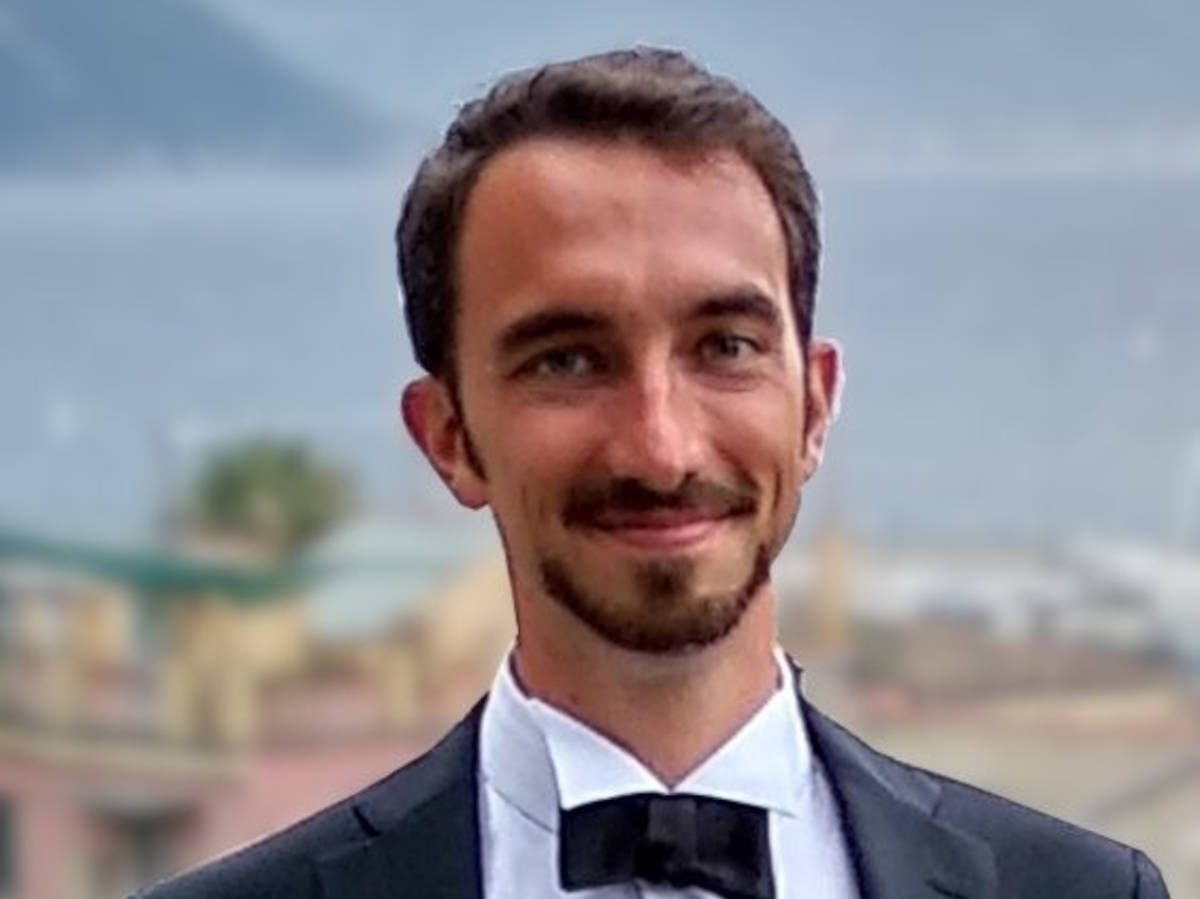
ESA
Marco Volponi is a scientist and engineer with a profound passion for space. After graduating in theoretical physics at the university of Genoa and Amsterdam, he completed the international master SEEDS (SpacE Exploration and Development Systems), where the objective was designing the first manned outpost on the surface of Mars. Subsequently he worked at ThalesAleniaSpace Italia, mainly on PFPU – a project which aims to grow potatoes in space – and on EDEN-ISS, designing, building and sending an autonomous greenhouse in Antarctica. Now he’s working at ESA, contributing to the MELiSSA projects, which aims to develop the first closed life support systems for humans in space.
References
A Feasibility Study for A Short Duration Human Mission to the Martian Surface
Dec 2016 – Acta Futura, Issue 10 – ESA
Status of the EDEN ISS Rack-like food production unit after five months in Antarctica
Jul 2018 – ICES (International Conference on Environmental Systems)
The MELiSSA project on the ESA website:
For the « Visions for the 21st Century » workshop, we created a deck of cards. Each participant to the workshop answered the same first question « what has attracted you to space » and then two others that they picked up blindly. Here their answers in those eight choral podcasts.
Deck of Cards Proposition: Annick Bureaud
Cards Questions: Annick Bureaud, Ewen Chardronnet
Cards Graphic Design: Quentin Aurat
Podcasts Sound Design: Jean-Yves Leloup
Archives
Leonardo/Olats
Observatoire Leonardo des Arts et des Techno-Sciences
À propos / About | Lettre d'information Olats News



Pour toute (re)publication, merci de contacter / For any (re)publication, please contact Annick Bureaud: info@olats.org
Pour toute question concernant le site, merci de contacter / For any issue about the website, please contact: webmaster@olats.org
Design Thierry Fournier
© Association Leonardo 1997-2022
